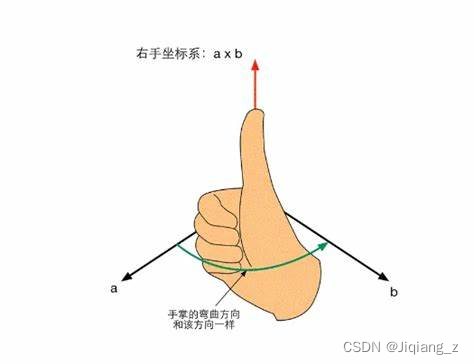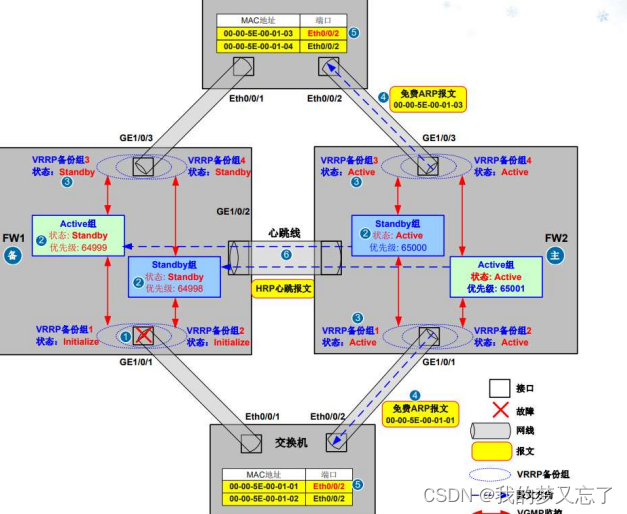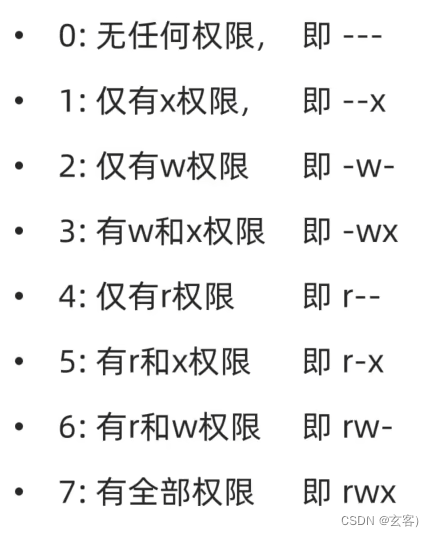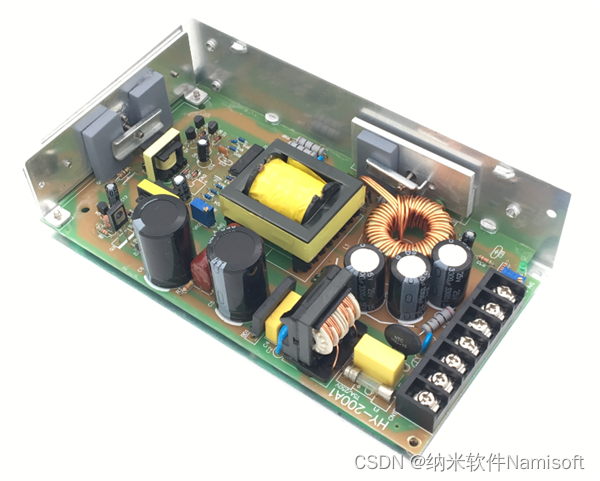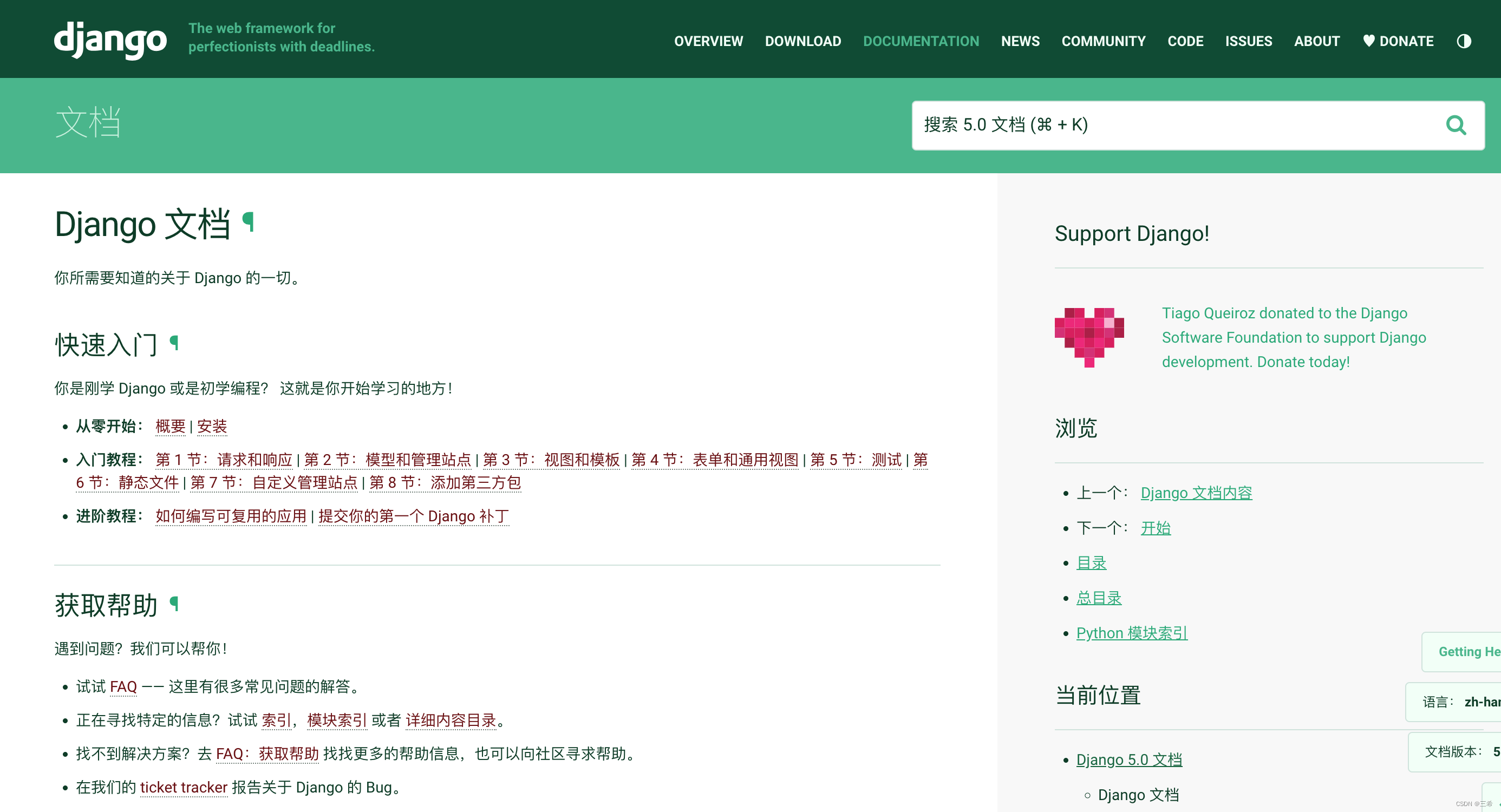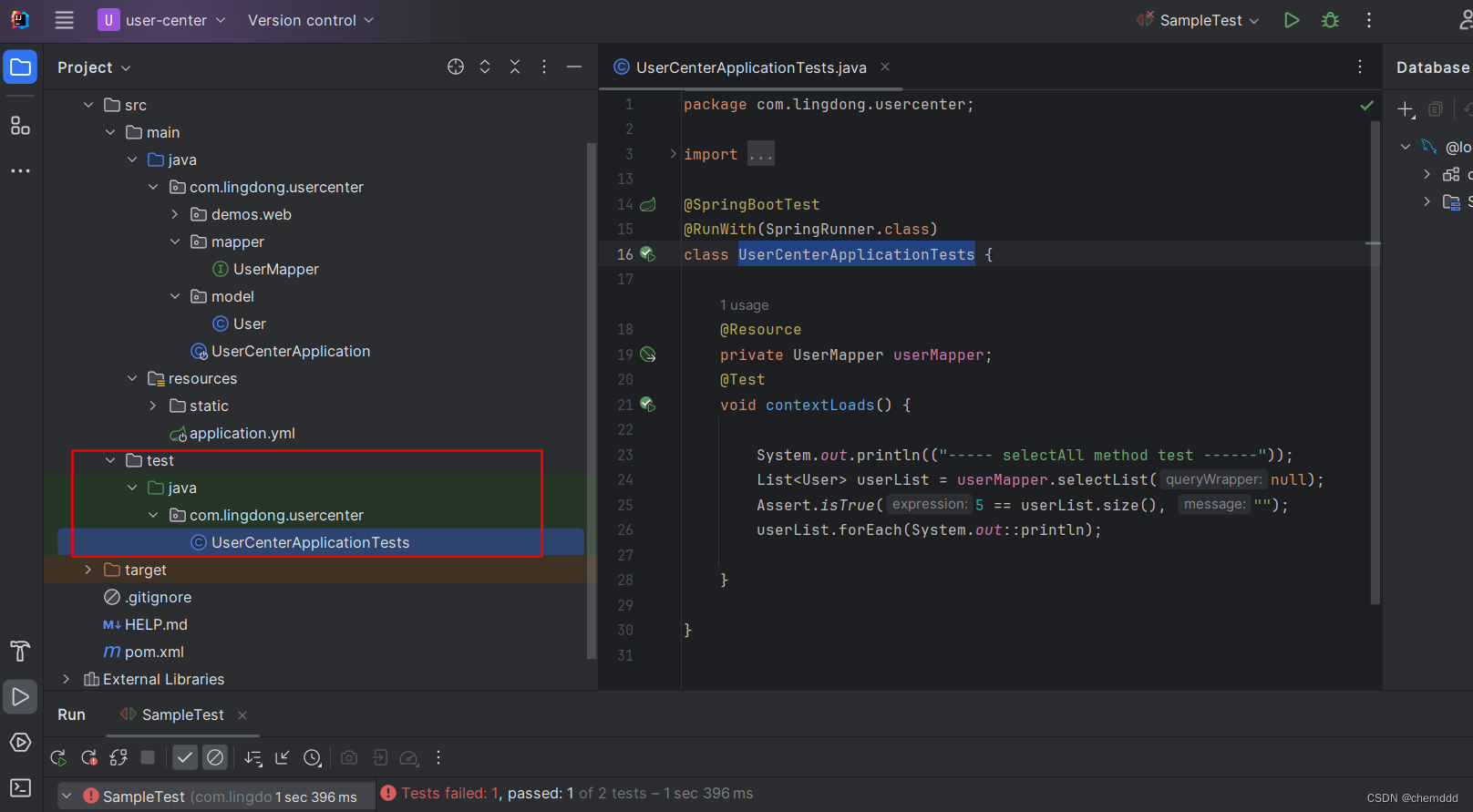一、DPI-RGB驱动
BL808的手册上显示是支持RGB565屏幕显示输出的,但是一直没找到网上的使用例程。且官方的SDK显示也是能够使用的,只是缺少了驱动。这一部分驱动在SIPEED的SDK中已经内置了,今天就是简单的点亮一个800*480 RGB565的屏幕。
二、BL808支持的DPI-RGB屏幕格式
1.从手册可以看到,BL808支持的显示范围如下表:
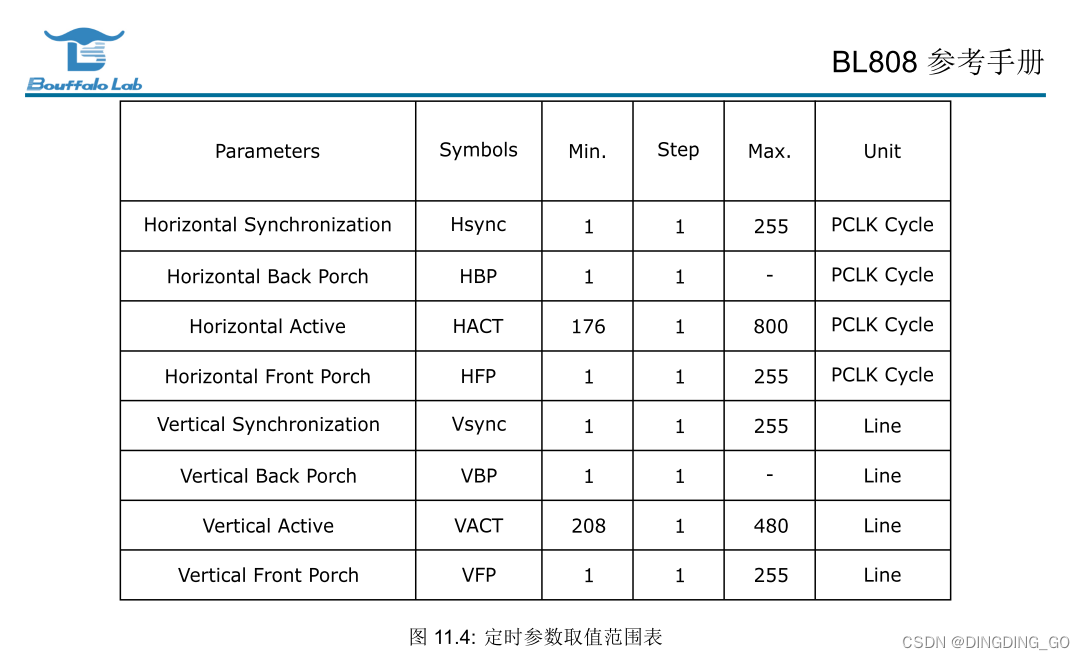
Horizontal Active:屏幕横向最大显示分辨率为800,最小为176像素;
Vertical Active:屏幕纵向最大显示分辨率为480,最小为208;
也就是说日常的3英寸、4.3英寸、5英寸、7英寸的480*854类型是竖屏是不支持的,在这个地方我跳了坑,买了两块480*854的5英寸RGB屏幕,结果只能显示一半。因此只有横屏的高分辨率屏幕才是支持的。
目前我使用的是这一块5英寸屏幕,横屏显示,800*480 RGB888,驱动IC为ST7265;40P管脚。
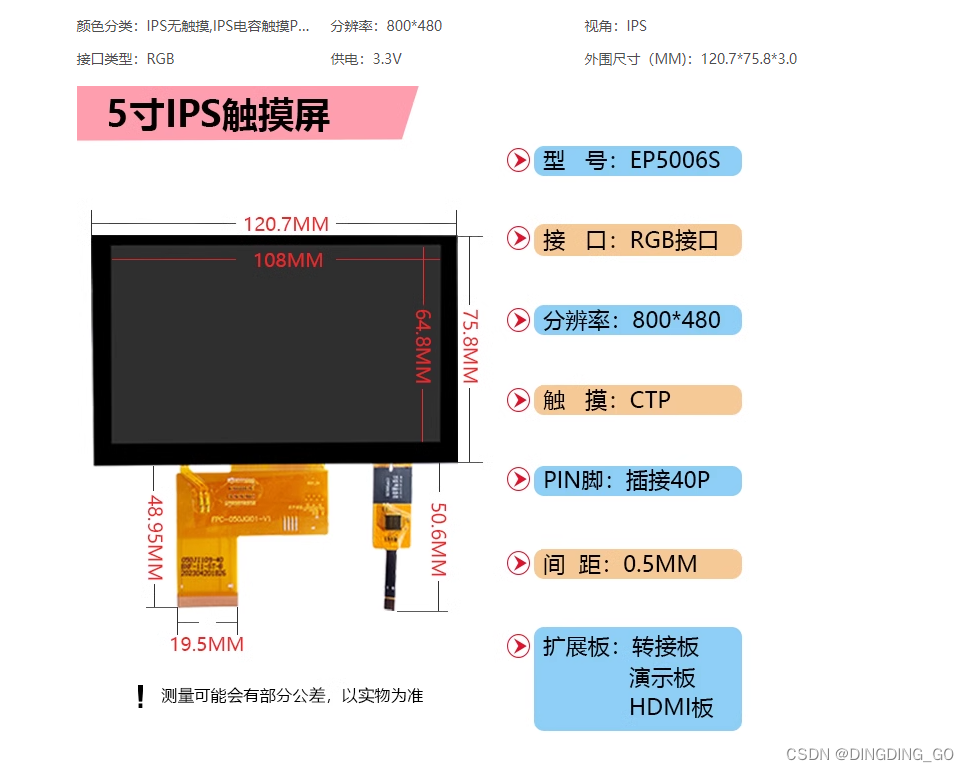
使用0.5mm间距的FPC排线,上电不需要初始化屏参,直接输出屏幕数据就行。
(小知识点:一般竖屏的屏幕需要使用9bit的spi或者IIC来初始化屏幕主控,用来调节分辨率等各种参数,横屏的好像都是厂家默认设置好的参数,一般不需要调整,直接上电输出数据就可以)。
2.BL808只支持RGB565格式,一般默认的屏幕都是RGB888格式的,所以我是用的这款屏幕需要将BL808所对应的数据在高地址上对齐,在物理接口连线上屏幕的R0-R2,G0-G1,B0-B2是悬空的,而信号线接法如下:
| BL808GPIO序号 | BL808管脚定义 | RGB屏幕FPC定义 |
| GPIO17 | DPI_DATA[0] | R[3] |
| ... | ... | ... |
| GPIO21 | DPI_DATA[4] | R[7] |
| GPIO22 | DPI_DATA[5] | G[2] |
| ... | ... | ... |
| GPIO27 | DPI_DATA[10] | G[7] |
| GPIO28 | DPI_DATA[11] | B[3] |
| ... | ... | ... |
| GPIO32 | DPI_DATA[15] | B[7] |
| GPIO33 | DPI_DE | LCD_DE |
| GPIO12 | DPI_VS | LCD_VS |
| GPIO13 | DPI_HS | LCD_HS |
| GPIO16 | DPI_PCLK | LCD_CLK |
| GPIO8 | GPIO8 | LCD_RST/DISP |
其中上述GPIO8可以使用,也可以不使用,因为在不同的屏幕中对RST的要求是不太一样的。我在上面的5寸屏幕上是把FPC上的DISP管脚接到了GPIO8;用来进行复位控制。
三、M1s_Dock管脚复用
M1s_Dock开发板的管脚是不太多的,其中在使用RGB屏幕时基本上不会剩什么管脚可以使用了。因此需要按照需求进行部分重新分配。
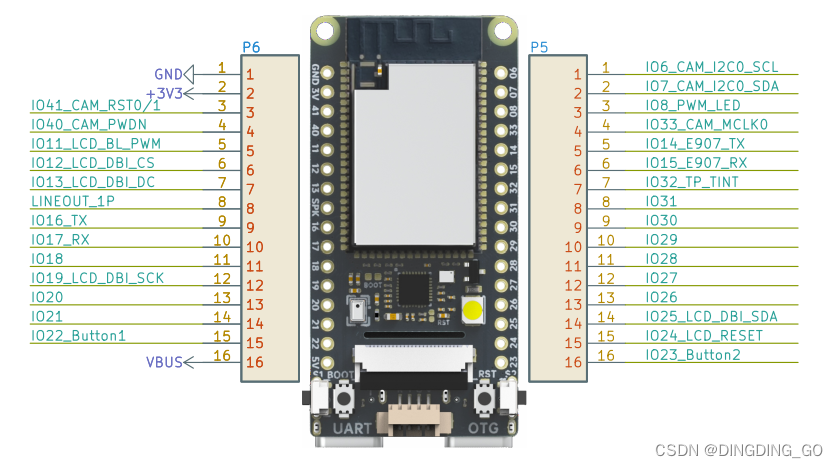
按照上面的管脚需求表,开发板外接的2.54排座还剩如下管脚:GPIO6、GPIO7 、GPIO11、GPIO14、GPIO15、GPIO40、GPIO41。并且在M1s_Dock的BL702转双串口的时候,将GPIO14、GPIO15当作的E907(M0)内核的调试串口,将GPIO16、GPIO17当作C906(D0)的调试串口。现在后者被RGB屏幕占用了,因此需要将GPIO40、GPIO41这两个引脚,复用为C906的调试串口。
在引脚复用的时候还有一个问题就是,手册中描述引脚分为2个等级,一种是AON_IO,一种是PDS_IO;如下表,其中GPIO40、GPIO41就是特殊的AON_IO,因此在复用的时候还需要额外操作。(这一点在没完全看完资料的我来说是致命的,搞了2天才搞清楚为什么C906一直没输出)。
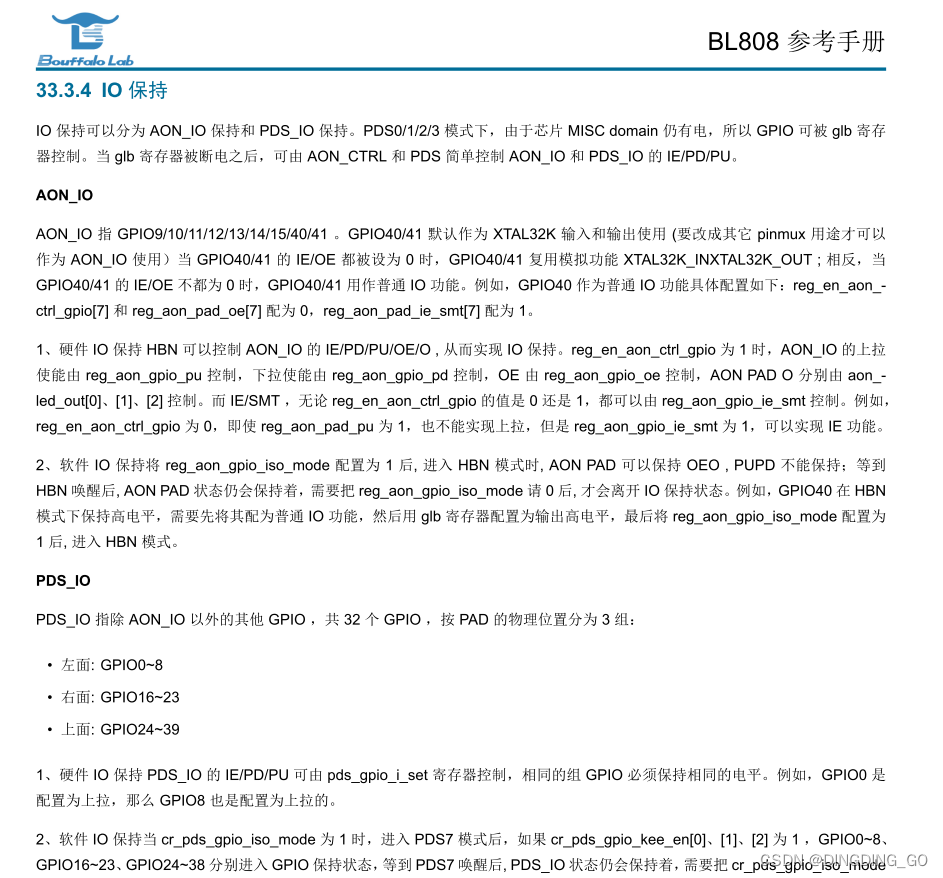
打开SIPEED对应的Linux下的开发SDK,对应目录为M1s_Bl808_SDK/components/sipeed/c906/m1s_start/src/start_main.c文件,这个是c906内核在freertos初始化的主函数对应文件;将第27-28行的管脚引用修改为
#define UART_TX_C906 (40)
#define UART_RX_C906 (41)在头文件区域增加一个头文件调用, #include "bl808_glb.h"用来配置GPIO。
新增一个管脚配置函数,static void bfl_c906_uart0_tx_rx_remap_gpio_init(void),用来使GPIO11-GPIO13、GPIO40、GPIO41失能AON功能;
static void bfl_c906_uart0_tx_rx_remap_gpio_init(void)
{
HBN_AON_PAD_CFG_Type aonPadCfg = {
DISABLE,
DISABLE,
DISABLE,
HBN_GPIO_PAD_PULL_NONE,
};
HBN_Aon_Pad_Cfg(DISABLE, HBN_AON_PAD_GPIO40, &aonPadCfg);
HBN_Aon_Pad_Cfg(DISABLE, HBN_AON_PAD_GPIO41, &aonPadCfg);
}
static void bfl_c906_gpio_11_to_gpio_15_remap_gpio_init(void)
{
HBN_AON_PAD_CFG_Type aonPadCfg = {
DISABLE,
DISABLE,
DISABLE,
HBN_GPIO_PAD_PULL_NONE,
};
HBN_Aon_Pad_Cfg(DISABLE, HBN_AON_PAD_GPIO11, &aonPadCfg);
HBN_Aon_Pad_Cfg(DISABLE, HBN_AON_PAD_GPIO12, &aonPadCfg);
HBN_Aon_Pad_Cfg(DISABLE, HBN_AON_PAD_GPIO13, &aonPadCfg);
}在主函数bfl_main函数开始处调用上面的bfl_c906_uart0_tx_rx_remap_gpio_init(void)函数,
void bfl_main()
{
if(UART_TX_C906 == 40 && UART_RX_C906 == 41) //当使用RGB屏幕时需要使用11-15和40 41管脚,复用为普通IO管脚
{
bfl_c906_uart0_tx_rx_remap_gpio_init();
bfl_c906_gpio_11_to_gpio_15_remap_gpio_init();
}
bl_uart_c906_init(0, UART_TX_C906, UART_RX_C906, 0, 0, UART_BAUD_C906);
puts("Starting bl808 now....\r\n");
bl808_FreeRTOS_init();
puts("[OS] Starting aos_loop_proc task...\r\n");
xTaskCreate(aos_loop_proc, (char *)"event_loop", 1024, NULL, 15, NULL);
puts("[OS] Stop c906 xram handle...\r\n");
// m1s_c906_xram_init();
puts("[OS] Starting OS Scheduler...\r\n");
vTaskStartScheduler();
}完整的配置文件如下,因为我的C906并没有使用PWM功能,因此在主函数中注释掉了 m1s_c906_xram_init()函数,如果有使用的同学,还必须去E907的配置文件调节挺多项内容,来使用没有被RGB接口占用的GPIO管脚来操作PWM功能。
#include <stdint.h>
#include <stdio.h>
#include <stdlib.h>
#include <string.h>
/* FreeRTOS */
#include <FreeRTOS.h>
#include <task.h>
#include <timers.h>
/* aos */
#include <aos/kernel.h>
#include <aos/yloop.h>
#include <cli.h>
#include <device/vfs_uart.h>
#include <event_device.h>
#include <vfs.h>
/* driver */
#include <bl_uart.h>
#include <hosal_uart.h>
#include "bl808_glb.h"
#include "m1s_c906_xram.h"
#define UART_ID_C906 (0)
#define UART_TX_C906 (40)
#define UART_RX_C906 (41)
#define UART_BAUD_C906 (2000000)
HOSAL_UART_DEV_DECL(uart_stdio, UART_ID_C906, UART_TX_C906, UART_RX_C906, UART_BAUD_C906)
static void bl808_FreeRTOS_init(void)
{
extern uint8_t _heap_start_tcm;
extern uint8_t _heap_size_tcm;
static HeapRegion_t xHeapRegions[] = {
{NULL, 0}, /* set on runtime */
{NULL, 0} /* Terminates the array */
};
xHeapRegions[0].pucStartAddress = (uint8_t *)&_heap_start_tcm;
xHeapRegions[0].xSizeInBytes = (size_t)&_heap_size_tcm;
printf("Heap Info: %ld KB @ [0x%p ~ 0x%p]\r\n", xHeapRegions[0].xSizeInBytes >> 10, xHeapRegions[0].pucStartAddress,
xHeapRegions[0].pucStartAddress + xHeapRegions[0].xSizeInBytes);
vPortDefineHeapRegions(xHeapRegions);
}
void vApplicationStackOverflowHook(TaskHandle_t xTask, char *pcTaskName)
{
puts("Stack Overflow checked\r\n");
printf("Task Name %s\r\n", pcTaskName);
while (1) {
/*empty here*/
}
}
void vApplicationMallocFailedHook(void)
{
printf("Memory Allocate Failed. Current left size is %lu bytes\r\n", xPortGetFreeHeapSize());
while (1) {
/*empty here*/
}
}
void vApplicationIdleHook(void) {}
void vApplicationGetIdleTaskMemory(StaticTask_t **ppxIdleTaskTCBBuffer, StackType_t **ppxIdleTaskStackBuffer,
uint32_t *pulIdleTaskStackSize)
{
/* If the buffers to be provided to the Idle task are declared inside this
function then they must be declared static - otherwise they will be allocated on
the stack and so not exists after this function exits. */
static StaticTask_t xIdleTaskTCB;
static StackType_t uxIdleTaskStack[configMINIMAL_STACK_SIZE];
/* Pass out a pointer to the StaticTask_t structure in which the Idle task's
state will be stored. */
*ppxIdleTaskTCBBuffer = &xIdleTaskTCB;
/* Pass out the array that will be used as the Idle task's stack. */
*ppxIdleTaskStackBuffer = uxIdleTaskStack;
/* Pass out the size of the array pointed to by *ppxIdleTaskStackBuffer.
Note that, as the array is necessarily of type StackType_t,
configMINIMAL_STACK_SIZE is specified in words, not bytes. */
*pulIdleTaskStackSize = configMINIMAL_STACK_SIZE;
}
/* configSUPPORT_STATIC_ALLOCATION and configUSE_TIMERS are both set to 1, so the
application must provide an implementation of vApplicationGetTimerTaskMemory()
to provide the memory that is used by the Timer service task. */
void vApplicationGetTimerTaskMemory(StaticTask_t **ppxTimerTaskTCBBuffer, StackType_t **ppxTimerTaskStackBuffer,
uint32_t *pulTimerTaskStackSize)
{
/* If the buffers to be provided to the Timer task are declared inside this
function then they must be declared static - otherwise they will be allocated on
the stack and so not exists after this function exits. */
static StaticTask_t xTimerTaskTCB;
static StackType_t uxTimerTaskStack[configTIMER_TASK_STACK_DEPTH];
/* Pass out a pointer to the StaticTask_t structure in which the Timer
task's state will be stored. */
*ppxTimerTaskTCBBuffer = &xTimerTaskTCB;
/* Pass out the array that will be used as the Timer task's stack. */
*ppxTimerTaskStackBuffer = uxTimerTaskStack;
/* Pass out the size of the array pointed to by *ppxTimerTaskStackBuffer.
Note that, as the array is necessarily of type StackType_t,
configTIMER_TASK_STACK_DEPTH is specified in words, not bytes. */
*pulTimerTaskStackSize = configTIMER_TASK_STACK_DEPTH;
}
void vAssertCalled(void)
{
volatile uint32_t ulSetTo1ToExitFunction = 0;
taskDISABLE_INTERRUPTS();
while (ulSetTo1ToExitFunction != 1) {
__asm volatile("NOP");
}
}
static inline void main_warpper()
{
extern void main(void);
main();
vTaskDelete(NULL);
}
static void start_main(void *arg) { xTaskCreate(main_warpper, (char *)"main", 4096, NULL, 15, NULL); }
static void aos_loop_proc(void *pvParameters)
{
int fd_console;
vfs_init();
vfs_device_init();
/* uart */
vfs_uart_init_simple_mode(UART_ID_C906, UART_TX_C906, UART_RX_C906, UART_BAUD_C906,
"/dev/ttyS0"); // UART for cli
aos_loop_init();
fd_console = aos_open("/dev/ttyS0", 0);
if (fd_console >= 0) {
printf("Init CLI with event Driven\r\n");
aos_cli_init(0);
aos_poll_read_fd(fd_console, aos_cli_event_cb_read_get(), (void *)0x12345678);
}
aos_post_delayed_action(100, start_main, NULL);
aos_loop_run();
puts("------------------------------------------\r\n");
puts("+++++++++Critical Exit From Loop++++++++++\r\n");
puts("******************************************\r\n");
vTaskDelete(NULL);
}
static void bfl_c906_uart0_tx_rx_remap_gpio_init(void)
{
HBN_AON_PAD_CFG_Type aonPadCfg = {
DISABLE,
DISABLE,
DISABLE,
HBN_GPIO_PAD_PULL_NONE,
};
HBN_Aon_Pad_Cfg(DISABLE, HBN_AON_PAD_GPIO40, &aonPadCfg);
HBN_Aon_Pad_Cfg(DISABLE, HBN_AON_PAD_GPIO41, &aonPadCfg);
}
static void bfl_c906_gpio_11_to_gpio_15_remap_gpio_init(void)
{
HBN_AON_PAD_CFG_Type aonPadCfg = {
DISABLE,
DISABLE,
DISABLE,
HBN_GPIO_PAD_PULL_NONE,
};
HBN_Aon_Pad_Cfg(DISABLE, HBN_AON_PAD_GPIO11, &aonPadCfg);
HBN_Aon_Pad_Cfg(DISABLE, HBN_AON_PAD_GPIO12, &aonPadCfg);
HBN_Aon_Pad_Cfg(DISABLE, HBN_AON_PAD_GPIO13, &aonPadCfg);
}
void bfl_main()
{
if(UART_TX_C906 == 40 && UART_RX_C906 == 41) //当使用RGB屏幕时需要使用11-15和40 41管脚,复用为普通IO管脚
{
bfl_c906_uart0_tx_rx_remap_gpio_init();
bfl_c906_gpio_11_to_gpio_15_remap_gpio_init();
}
bl_uart_c906_init(0, UART_TX_C906, UART_RX_C906, 0, 0, UART_BAUD_C906);
puts("Starting bl808 now....\r\n");
bl808_FreeRTOS_init();
puts("[OS] Starting aos_loop_proc task...\r\n");
xTaskCreate(aos_loop_proc, (char *)"event_loop", 1024, NULL, 15, NULL);
puts("[OS] Stop c906 xram handle...\r\n");
// m1s_c906_xram_init();
puts("[OS] Starting OS Scheduler...\r\n");
vTaskStartScheduler();
}
四、DPI驱动文件修改
上面描述铺垫了这么多才真的到达正文,为自己丢掉的头发感到屈辱。。。。。再一次呼吁,厂家要不然就不要推出国产芯片,推出了就好好整啊,DIY玩家在没有资料和支持的时候,真的好难的。。。。
博流官方已经做好了驱动文件,但是却没有在自己家的SDK中开放出来,真的是脑洞大,看起来支持TOB的业务才是他们的重要之处。
1.打开SIPEED对应的Linux下的开发SDK,对应目录为M1s_Bl808_SDK/components/platform/soc/bl808/bl808_std/BSP_Common/lcd/mipi_dpistard_dpi.c文件。
在文件开头进行管脚定义,因为一开始我使用的是需要9bit配置显示驱动芯片的竖屏480*854的屏幕,因此还保留了这部分驱动代码,如果有同学刚好使用480*480之类的方形屏幕,还可以按照需求进行修改。里面定义了GPIO11作为LCD_CS,GPIO6作为LCD_SCL,GPIO7作为LCD_SDA
#define PIN_LCD_RESET (8)
#define PIN_LCD_CS (11)
#define PIN_LCD_SCL (6)
#define PIN_LCD_SDO (7)
#define LCD_CS_H GLB_GPIO_Write(PIN_LCD_CS, 1)
#define LCD_CS_L GLB_GPIO_Write(PIN_LCD_CS, 0)
#define LCD_SCL_H GLB_GPIO_Write(PIN_LCD_SCL, 1)
#define LCD_SCL_L GLB_GPIO_Write(PIN_LCD_SCL, 0)
#define LCD_SDO_H GLB_GPIO_Write(PIN_LCD_SDO, 1)
#define LCD_SDO_L GLB_GPIO_Write(PIN_LCD_SDO, 0)
下面进行重头戏,也就是配置文件的讲解,这一部分加上我对RGB屏幕的不了解,耗费了一周的时间进行摸索,真是一个头两个大。
下面进行重要的参数寄存器讲解,
hTotalCnt:水平方向的像素总数,=Hsync+HBP+HACT+HFP-1,其中为什么需要-1,我查阅了好多MPU的设计,可能是为了对其在16进制下第一个数是0的原因,(具体我也不知道。。反正是没有文件,只是瞎猜的情况下,很难说清楚。。。。。)
hBlankCnt:水平方向的空白像素总数,=Hsync+HBP+HFP-1,也是就是总像素数-有效像素数。
vTotalCnt:纵向方向的总行数,=Vsync+VBP+VACT+VFP-1,
vBlankCnt:纵向方向的空白行数,=Vsync+VBP+VFP-1,也是就是总行数-有效行数。
hsyncWidth:水平信号同步宽度,我的屏幕手册是4个PCLK宽度,因此设置为4-1;
hfpWidth:水平前廊信号宽度,我的屏幕手册是8个PCLK宽度,因此设置为8-1;
vsyncWidth:纵向方向同步信号宽度,4-1;
vfpWidth:纵向方向前廊信号宽度,16-1;
下面附上我的屏幕参数表

dvp源配置结构体dvpTsrcCfg和display显示参数配置结构体displayCfg如下:
static DVP_TSRC_Cfg_Type dvpTsrcCfg = {
.dataFromSensor = DISABLE, /* Enable: pixel data is from sensor, disable: pixel data is from AXI */
.sensorHsyncInverse = DISABLE, /* Enable or disable inverse signal of sensor hsync */
.sensorVsyncInverse = DISABLE, /* Enable or disable inverse signal of sensor vsync */
.yuv420Enable = DISABLE, /* Enable or disable YUV420 mode, YUV420 data is from 2 different planar buffers when enable */
.lineType = DVP_TSRC_YUV420_LINE_EVEN, /* Select UV send in Y even lines or odd lines */
.swapMode = ENABLE, /* Enable or disable swap mode */
.swapControl = DVP_TSRC_SWAP_SOFTWARE, /* Set swap index controlled by hardware or software */
.dvp2axi = DVP_TSRC_DVP2AXI_0, /* Choose dvp2axi used */
#if (STANDARD_DPI_PIXEL_FORMAT == STANDARD_DPI_PIXEL_FORMAT_RGB565)
.format = DVP_TSRC_PIXEL_RGB565_16TO24BIT, /* Set pixel data format */
.byte0 = 0, /* Byte 0 selection */
.byte1 = 2, /* Byte 1 Selection */
.byte2 = 1, /* Byte 2 Selection */
#elif (STANDARD_DPI_PIXEL_FORMAT == STANDARD_DPI_PIXEL_FORMAT_RGB888)
.format = DVP_TSRC_PIXEL_RGBA8888_32TO24BIT, /* Set pixel data format */
.byte0 = 0, /* Byte 0 selection */
.byte1 = 1, /* Byte 1 Selection */
.byte2 = 2, /* Byte 2 Selection */
#endif
.burst = DVP_TSRC_BURST_TYPE_INCR16, /* AXI burst length */
.hTotalCnt = 820-1, /* Horizontal total pixel count */
.hBlankCnt = 20-1, /* Horizontal blank stage pixel count */
.vTotalCnt = 516-1, /* Vertical total pixel count */
.vBlankCnt = 36-1, /* Vertical blank stage pixel count */
.prefetch = 0, /* Vertical prefetch start position, relativeto blank start position */
.fifoThreshold = STANDARD_DPI_W, /* FIFO threshold for each DVP line to start to output */
.memStartY0 = 0, /* AXI2DVP start address, Y-planar in YUV420 mode, frame 0 in swap mode */
.memSizeY0 = sizeof(standard_dpi_color_t) *STANDARD_DPI_W * STANDARD_DPI_H, /* AXI2DVP memory size of memStartY0 */
.memStartY1 = 0, /* AXI2DVP start address, Y-planar in YUV420 mode, frame 1 in swap mode, don't care if not swap mode */
.memStartUV0 = 0, /* AXI2DVP start address, UV-planar in YUV420 mode, frame 0 in swap mode, don't care if not YUV420 mode */
.memStartUV1 = 0, /* AXI2DVP start address, UV-planar in YUV420 mode, frame 1 in swap mode, don't care if not YUV420 swap mode */
};
static DSP2_MISC_Display_Cfg_Type displayCfg = {
.dpiEnable = ENABLE, /* Enable or disable dpi function */
.bt1120Enable = DISABLE, /* Enable or disable BT1120 function, BT1120 and BT656 should not be enabled at the same time */
.inputType = DSP2_MISC_DISPLAY_TSRC_RGB_OUTPUT, /* Select display input */
.osdType = DSP2_MISC_DISPLAY_OSD_TSRCYUV422_OUTPUT, /* Select display OSD input */
.hsyncWidth = 4-1, /* Horizontal synchronization width */
.hfpWidth = 8-1 , /* Horizontal front porch width */
.vsyncWidth = 4-1, /* Vertical synchronization width */
.vfpWidth = 16-1, /* Vertical front porch width */
};配置完上述屏幕,还需要对PCLK时钟的频率进行配置。BL808的默认MIPIPLL时钟是1500M,可按照需求进行分频,分频设置函数很奇怪,GLB_Set_Display_CLK(ENABLE, GLB_DISP_CLK_MIPIPLL_1500M, 29)函数默认只能配置输入为偶数的数值,在具体实现过程中或发现,舍弃了最低位。
我的屏幕在显示60FPS的情况下,需要的时钟频率为820*516*2*60=50.7744M,因此分频系数为1500/50.77=29,
static int standard_dpi_peripheral_init(standard_dpi_color_t *screen_buffer)
{
/* MIPI clock config */
GLB_Config_MIPI_PLL(GLB_XTAL_40M, mipiPllCfg_1500M);
GLB_Set_Display_CLK(ENABLE, GLB_DISP_CLK_MIPIPLL_1500M, 29); //0-127
// GLB_Set_Display_CLK(ENABLE, GLB_DISP_CLK_MIPIPLL_1500M, 59);
dvpTsrcCfg.memStartY0 = (uint32_t)(uintptr_t)screen_buffer;
/* DPI config */
DVP_TSRC_Set_Swap_Index(DVP_TSRC1_ID, 1);
DVP_TSRC_Init(DVP_TSRC1_ID, &dvpTsrcCfg);
DSP2_MISC_Display_Init(&displayCfg);
// DVP_TSRC_Fake_Data_Init(DVP_TSRC1_ID, &test_fake_data);
/* Set display interrupt */
DSP2_MISC_Int_Mask(DSP2_MISC_INT_ALL, MASK);
DSP2_MISC_SEOF_Set_Source(DSP2_MISC_INT_DISPLAY, DSP2_MISC_SEOF_DISPLAY_OUTPUT);
DSP2_MISC_SEOF_Set_Edge(DSP2_MISC_INT_DISPLAY, DSP2_MISC_SEOF_VSYNC_NEGEDGE);
DSP2_MISC_Int_Callback_Install(DSP2_MISC_INT_DISPLAY, &standard_dpi_frame_interrupt);
DSP2_MISC_Int_Mask(DSP2_MISC_INT_DISPLAY, UNMASK);
CPU_Interrupt_Enable(DISPLAY_IRQn);
System_NVIC_SetPriority(DISPLAY_IRQn, 4, 1);
return 0;
}对使用到的LCD_RST、LCD_SDA、LCD_SCL、LCD_CS管脚进行初始化,对使用到的RGB管脚好像不初始化也可以。
static void lcd_dpi_gpio_init(void)
{
GLB_GPIO_Cfg_Type cfg;
uint8_t gpiopins[] = {GLB_GPIO_PIN_12, GLB_GPIO_PIN_13, GLB_GPIO_PIN_16, GLB_GPIO_PIN_17,
GLB_GPIO_PIN_18, GLB_GPIO_PIN_19, GLB_GPIO_PIN_20,
GLB_GPIO_PIN_21,GLB_GPIO_PIN_22,GLB_GPIO_PIN_23,GLB_GPIO_PIN_24,
GLB_GPIO_PIN_33, GLB_GPIO_PIN_32, GLB_GPIO_PIN_31, GLB_GPIO_PIN_30, GLB_GPIO_PIN_29,
GLB_GPIO_PIN_28, GLB_GPIO_PIN_27, GLB_GPIO_PIN_26, GLB_GPIO_PIN_25};
int i;
cfg.gpioMode=GPIO_MODE_AF;
cfg.pullType=GPIO_PULL_NONE;
cfg.drive=0;
cfg.smtCtrl=1;
for(i=0;i<sizeof(gpiopins)/sizeof(gpiopins[0]);i++){
cfg.gpioPin=gpiopins[i];
cfg.gpioFun=GPIO_FUN_DPI;
GLB_GPIO_Init(&cfg);
}
}
static void LCD_FD050FW_GPIO_init(void)
{
GLB_GPIO_Cfg_Type cfg;
cfg.drive = 0;
cfg.smtCtrl = 1;
cfg.gpioFun = GPIO_FUN_GPIO;
cfg.outputMode = 0;
cfg.pullType = GPIO_PULL_NONE;
cfg.gpioPin = PIN_LCD_CS;
cfg.gpioMode = GPIO_MODE_OUTPUT;
GLB_GPIO_Init(&cfg);
GLB_GPIO_Write(PIN_LCD_CS, true);
GLB_GPIO_Output_Enable(PIN_LCD_CS);
cfg.gpioPin = PIN_LCD_RESET;
cfg.gpioMode = GPIO_MODE_OUTPUT;
GLB_GPIO_Init(&cfg);
GLB_GPIO_Write(PIN_LCD_RESET, true);
GLB_GPIO_Output_Enable(PIN_LCD_RESET);
cfg.gpioPin = PIN_LCD_SCL;
cfg.gpioMode = GPIO_MODE_OUTPUT;
GLB_GPIO_Init(&cfg);
GLB_GPIO_Write(PIN_LCD_SCL, true);
GLB_GPIO_Output_Enable(PIN_LCD_SCL);
cfg.gpioPin = PIN_LCD_SDO;
cfg.gpioMode = GPIO_MODE_OUTPUT;
GLB_GPIO_Init(&cfg);
GLB_GPIO_Write(PIN_LCD_SDO, true);
GLB_GPIO_Output_Enable(PIN_LCD_SDO);
}
下面的函数为9bit_spi主控初始化的函数,横屏的是不需要用到的,但是竖屏的可能会使用到,我也就直接贴出来。
static void write_cmd(unsigned char cmd)
{
unsigned char i;
LCD_CS_L;
LCD_SCL_L;
LCD_SDO_L;
LCD_SCL_H;
for(i=0;i<8;i++){
LCD_SCL_L;
if(cmd & 0x80)
LCD_SDO_H;
else
LCD_SDO_L;
LCD_SCL_H;
cmd = cmd << 1;
}
LCD_CS_H;
}
static void write_data(unsigned char data)
{
unsigned char i;
LCD_CS_L;
LCD_SCL_L;
LCD_SDO_H;
LCD_SCL_H;
for(i=0;i<8;i++){
LCD_SCL_L;
if(data & 0x80)
LCD_SDO_H;
else
LCD_SDO_L;
LCD_SCL_H;
data = data << 1;
}
LCD_CS_H;
}
static void lcd_dpi_gpio_init(void)
{
GLB_GPIO_Cfg_Type cfg;
uint8_t gpiopins[] = {GLB_GPIO_PIN_12, GLB_GPIO_PIN_13, GLB_GPIO_PIN_16, GLB_GPIO_PIN_17,
GLB_GPIO_PIN_18, GLB_GPIO_PIN_19, GLB_GPIO_PIN_20,
GLB_GPIO_PIN_21,GLB_GPIO_PIN_22,GLB_GPIO_PIN_23,GLB_GPIO_PIN_24,
GLB_GPIO_PIN_33, GLB_GPIO_PIN_32, GLB_GPIO_PIN_31, GLB_GPIO_PIN_30, GLB_GPIO_PIN_29,
GLB_GPIO_PIN_28, GLB_GPIO_PIN_27, GLB_GPIO_PIN_26, GLB_GPIO_PIN_25};
int i;
cfg.gpioMode=GPIO_MODE_AF;
cfg.pullType=GPIO_PULL_NONE;
cfg.drive=0;
cfg.smtCtrl=1;
for(i=0;i<sizeof(gpiopins)/sizeof(gpiopins[0]);i++){
cfg.gpioPin=gpiopins[i];
cfg.gpioFun=GPIO_FUN_DPI;
GLB_GPIO_Init(&cfg);
}
}
static void LCD_FD050FW_GPIO_init(void)
{
GLB_GPIO_Cfg_Type cfg;
cfg.drive = 0;
cfg.smtCtrl = 1;
cfg.gpioFun = GPIO_FUN_GPIO;
cfg.outputMode = 0;
cfg.pullType = GPIO_PULL_NONE;
cfg.gpioPin = PIN_LCD_CS;
cfg.gpioMode = GPIO_MODE_OUTPUT;
GLB_GPIO_Init(&cfg);
GLB_GPIO_Write(PIN_LCD_CS, true);
GLB_GPIO_Output_Enable(PIN_LCD_CS);
cfg.gpioPin = PIN_LCD_RESET;
cfg.gpioMode = GPIO_MODE_OUTPUT;
GLB_GPIO_Init(&cfg);
GLB_GPIO_Write(PIN_LCD_RESET, true);
GLB_GPIO_Output_Enable(PIN_LCD_RESET);
cfg.gpioPin = PIN_LCD_SCL;
cfg.gpioMode = GPIO_MODE_OUTPUT;
GLB_GPIO_Init(&cfg);
GLB_GPIO_Write(PIN_LCD_SCL, true);
GLB_GPIO_Output_Enable(PIN_LCD_SCL);
cfg.gpioPin = PIN_LCD_SDO;
cfg.gpioMode = GPIO_MODE_OUTPUT;
GLB_GPIO_Init(&cfg);
GLB_GPIO_Write(PIN_LCD_SDO, true);
GLB_GPIO_Output_Enable(PIN_LCD_SDO);
}
static void LCD_KD050FW_init(void)
{
LCD_FD050FW_GPIO_init();
GLB_GPIO_Write(PIN_LCD_RESET, true);
bflb_platform_delay_ms(1);
GLB_GPIO_Write(PIN_LCD_RESET, false);
bflb_platform_delay_ms(10);
GLB_GPIO_Write(PIN_LCD_RESET, true);
bflb_platform_delay_ms(200);
//***************************************************************//LCD SETING
write_cmd(0xFF); // Change to Page 1 CMD
write_data(0xFF);
write_data(0x98);
write_data(0x06);
write_data(0x04);
write_data(0x01);
write_cmd(0x08); //Output SDA
write_data(0x10);
write_cmd(0x20); //set DE/VSYNC mode
write_data(0x00); //00:DE mode 01:SYNC mode
write_cmd(0x21); //DE = 1 Active
write_data(0x01);
write_cmd(0x22); //设置扫描模式,镜像,翻转
write_data(0x00);
// write_cmd(0x25); //vfp=22
// write_data(0x16);
// write_cmd(0x26); //
// write_data(0x18);
// write_cmd(0x27); //
// write_data(0x2F);
write_cmd(0x30);//Resolution setting 480 X 800
write_data(0x02); //00:480*864 01:480*854 02:480*800
write_cmd(0x31); //Inversion setting 2-dot
write_data(0x00);
write_cmd(0x40); //BT AVDD,AVDD
write_data(0x16); // VCI*2.5 / VCI X-3
write_cmd(0x41);
write_data(0x33);//22
write_cmd(0x42);
write_data(0x03); //VGL=DDVDH+VCIP -DDVDL,VGH=2DDVDL-VCIP
write_cmd(0x43);
write_data(0x09); //SET VGH clamp level
write_cmd(0x44);
write_data(0x06); //SET VGL clamp level
write_cmd(0x50); //VREG1
write_data(0x88);
write_cmd(0x51); //VREG2
write_data(0x88);
write_cmd(0x52); //Flicker MSB
write_data(0x00);
write_cmd(0x53); //Flicker LSB
write_data(0x44); //VCOM
write_cmd(0x55); // //Flicker
write_data(0x49);
write_cmd(0x60);
write_data(0x07);
write_cmd(0x61);
write_data(0x00);
write_cmd(0x62);
write_data(0x07);
write_cmd(0x63);
write_data(0x00);
//++++++++++++++++++ Gamma Setting ++++++++++++++++++//
write_cmd(0xA0); //Positive Gamma
write_data(0x00);
write_cmd(0xA1); //
write_data(0x09);
write_cmd(0xA2); //
write_data(0x11);
write_cmd(0xA3); //
write_data(0x0B);
write_cmd(0xA4); //
write_data(0x05);
write_cmd(0xA5); //
write_data(0x08);
write_cmd(0xA6); //
write_data(0x06);
write_cmd(0xA7); //
write_data(0x04);
write_cmd(0xA8); //
write_data(0x09);
write_cmd(0xA9); //
write_data(0x0C);
write_cmd(0xAA); //
write_data(0x15);
write_cmd(0xAB); //
write_data(0x08);
write_cmd(0xAC); //
write_data(0x0F);
write_cmd(0xAD); //
write_data(0x12);
write_cmd(0xAE); //
write_data(0x09);
write_cmd(0xAF); //
write_data(0x00);
///==============Nagitive
write_cmd(0xC0); //Negative Gamma
write_data(0x00);
write_cmd(0xC1); //
write_data(0x09);
write_cmd(0xC2); //
write_data(0x10);
write_cmd(0xC3); //
write_data(0x0C);
write_cmd(0xC4); //
write_data(0x05);
write_cmd(0xC5); //
write_data(0x08);
write_cmd(0xC6); //
write_data(0x06);
write_cmd(0xC7); //
write_data(0x04);
write_cmd(0xC8); //
write_data(0x08);
write_cmd(0xC9); //
write_data(0x0C);
write_cmd(0xCA); //
write_data(0x14);
write_cmd(0xCB); //
write_data(0x08);
write_cmd(0xCC); //
write_data(0x0F);
write_cmd(0xCD); //
write_data(0x11);
write_cmd(0xCE); //
write_data(0x09);
write_cmd(0xCF); //
write_data(0x00);
write_cmd(0xFF); // Change to Page 6 CMD for GIP timing
write_data(0xFF);
write_data(0x98);
write_data(0x06);
write_data(0x04);
write_data(0x06);
write_cmd(0x00); //
write_data(0x20);
write_cmd(0x01); //
write_data(0x0A);
write_cmd(0x02); //
write_data(0x00);
write_cmd(0x03); //
write_data(0x00);
write_cmd(0x04); //
write_data(0x01);
write_cmd(0x05); //
write_data(0x01);
write_cmd(0x06); //
write_data(0x98);
write_cmd(0x07); //
write_data(0x06);
write_cmd(0x08); //
write_data(0x01);
write_cmd(0x09); //
write_data(0x80);
write_cmd(0x0A); //
write_data(0x00);
write_cmd(0x0B); //
write_data(0x00);
write_cmd(0x0C); //
write_data(0x01);
write_cmd(0x0D); //
write_data(0x01);
write_cmd(0x0E); //
write_data(0x05);
write_cmd(0x0F); //
write_data(0x00);
write_cmd(0x10); //
write_data(0xF0);
write_cmd(0x11); //
write_data(0xF4);
write_cmd(0x12); //
write_data(0x01);
write_cmd(0x13); //
write_data(0x00);
write_cmd(0x14); //
write_data(0x00);
write_cmd(0x15); //
write_data(0xC0);
write_cmd(0x16); //
write_data(0x08);
write_cmd(0x17); //
write_data(0x00);
write_cmd(0x18); //
write_data(0x00);
write_cmd(0x19); //
write_data(0x00);
write_cmd(0x1A); //
write_data(0x00);
write_cmd(0x1B); //
write_data(0x00);
write_cmd(0x1C); //
write_data(0x00);
write_cmd(0x1D); //
write_data(0x00);
write_cmd(0x20); //
write_data(0x01);
write_cmd(0x21); //
write_data(0x23);
write_cmd(0x22); //
write_data(0x45);
write_cmd(0x23); //
write_data(0x67);
write_cmd(0x24); //
write_data(0x01);
write_cmd(0x25); //
write_data(0x23);
write_cmd(0x26); //
write_data(0x45);
write_cmd(0x27); //
write_data(0x67);
write_cmd(0x30); //
write_data(0x11);
write_cmd(0x31); //
write_data(0x11);
write_cmd(0x32); //
write_data(0x00);
write_cmd(0x33); //
write_data(0xEE);
write_cmd(0x34); //
write_data(0xFF);
write_cmd(0x35); //
write_data(0xBB);
write_cmd(0x36); //
write_data(0xAA);
write_cmd(0x37); //
write_data(0xDD);
write_cmd(0x38); //
write_data(0xCC);
write_cmd(0x39); //
write_data(0x66);
write_cmd(0x3A); //
write_data(0x77);
write_cmd(0x3B); //
write_data(0x22);
write_cmd(0x3C); //
write_data(0x22);
write_cmd(0x3D); //
write_data(0x22);
write_cmd(0x3E); //
write_data(0x22);
write_cmd(0x3F); //
write_data(0x22);
write_cmd(0x40); //
write_data(0x22);
write_cmd(0xFF);// Change to Page 7 CMD for GIP timing
write_data(0xFF);
write_data(0x98);
write_data(0x06);
write_data(0x04);
write_data(0x07);
write_cmd(0x17);
write_data(0x22);
write_cmd(0x02);
write_data(0x77);
write_cmd(0x26);
write_data(0xB2);
write_cmd(0xFF); // Change to Page 0 CMD for Normal command
write_data(0xFF);
write_data(0x98);
write_data(0x06);
write_data(0x04);
write_data(0x00);
write_cmd(0x3A);
write_data(0x50); //0X50 16BIT 0X60 18BIT 0X70 24BIT
write_cmd(0x11); // SLEEP OUT
bflb_platform_delay_ms(120);
write_cmd(0x29); // DISPLAY ON
bflb_platform_delay_ms(25);
}
在DPI初始化函数中,对上述构造的功能函数进行调用,
int standard_dpi_init(standard_dpi_color_t *screen_buffer)
{
if (screen_buffer == NULL) {
return -1;
}
lcd_dpi_gpio_init();
// LCD_KD050FW_init();
/* init DBI and DPI peripheral*/
standard_dpi_peripheral_init(screen_buffer);
/* enable DPI, Start output data*/
DVP_TSRC_Enable(DVP_TSRC1_ID);
return 0;
}上述文件中,完整的文件如下:
/**
* @file standard_dpi.c
* @brief
*
* Copyright (c) 2021 Bouffalolab team
*
* Licensed to the Apache Software Foundation (ASF) under one or more
* contributor license agreements. See the NOTICE file distributed with
* this work for additional information regarding copyright ownership. The
* ASF licenses this file to you under the Apache License, Version 2.0 (the
* "License"); you may not use this file except in compliance with the
* License. You may obtain a copy of the License at
*
* http://www.apache.org/licenses/LICENSE-2.0
*
* Unless required by applicable law or agreed to in writing, software
* distributed under the License is distributed on an "AS IS" BASIS, WITHOUT
* WARRANTIES OR CONDITIONS OF ANY KIND, either express or implied. See the
* License for the specific language governing permissions and limitations
* under the License.
*
*/
#include "../lcd.h"
#if defined(LCD_DPI_STANDARD)
#include "bflb_platform.h"
#include "bl808_dvp_tsrc.h"
#include "bl808_dsp2_misc.h"
#include "bl808_dbi.h"
#include "bl808_glb.h"
#include "dtsrc_reg.h"
#include "standard_dpi.h"
#define PIN_LCD_RESET (8)
#define PIN_LCD_CS (11)
#define PIN_LCD_SCL (6)
#define PIN_LCD_SDO (7)
#define LCD_CS_H GLB_GPIO_Write(PIN_LCD_CS, 1)
#define LCD_CS_L GLB_GPIO_Write(PIN_LCD_CS, 0)
#define LCD_SCL_H GLB_GPIO_Write(PIN_LCD_SCL, 1)
#define LCD_SCL_L GLB_GPIO_Write(PIN_LCD_SCL, 0)
#define LCD_SDO_H GLB_GPIO_Write(PIN_LCD_SDO, 1)
#define LCD_SDO_L GLB_GPIO_Write(PIN_LCD_SDO, 0)
/* Video memory used for this frame, Update in frame interrupt*/
static volatile standard_dpi_color_t *screen_last = NULL;
typedef void (*standard_dpi_callback)(void);
static volatile standard_dpi_callback standard_dpi_frame_callback = NULL;
static volatile standard_dpi_callback standard_dpi_frame_swap_callback = NULL;
static DVP_TSRC_Fake_Data_Cfg_Type test_fake_data={
.minData = 0x0000,
.maxData = 0xffff,
.step = 0x10,
};
static DVP_TSRC_Cfg_Type dvpTsrcCfg = {
.dataFromSensor = DISABLE, /* Enable: pixel data is from sensor, disable: pixel data is from AXI */
.sensorHsyncInverse = DISABLE, /* Enable or disable inverse signal of sensor hsync */
.sensorVsyncInverse = DISABLE, /* Enable or disable inverse signal of sensor vsync */
.yuv420Enable = DISABLE, /* Enable or disable YUV420 mode, YUV420 data is from 2 different planar buffers when enable */
.lineType = DVP_TSRC_YUV420_LINE_EVEN, /* Select UV send in Y even lines or odd lines */
.swapMode = ENABLE, /* Enable or disable swap mode */
.swapControl = DVP_TSRC_SWAP_SOFTWARE, /* Set swap index controlled by hardware or software */
.dvp2axi = DVP_TSRC_DVP2AXI_0, /* Choose dvp2axi used */
#if (STANDARD_DPI_PIXEL_FORMAT == STANDARD_DPI_PIXEL_FORMAT_RGB565)
.format = DVP_TSRC_PIXEL_RGB565_16TO24BIT, /* Set pixel data format */
.byte0 = 0, /* Byte 0 selection */
.byte1 = 2, /* Byte 1 Selection */
.byte2 = 1, /* Byte 2 Selection */
#elif (STANDARD_DPI_PIXEL_FORMAT == STANDARD_DPI_PIXEL_FORMAT_RGB888)
.format = DVP_TSRC_PIXEL_RGBA8888_32TO24BIT, /* Set pixel data format */
.byte0 = 0, /* Byte 0 selection */
.byte1 = 1, /* Byte 1 Selection */
.byte2 = 2, /* Byte 2 Selection */
#endif
.burst = DVP_TSRC_BURST_TYPE_INCR16, /* AXI burst length */
.hTotalCnt = 820-1, /* Horizontal total pixel count */
.hBlankCnt = 20-1, /* Horizontal blank stage pixel count */
.vTotalCnt = 516-1, /* Vertical total pixel count */
.vBlankCnt = 36-1, /* Vertical blank stage pixel count */
.prefetch = 0, /* Vertical prefetch start position, relativeto blank start position */
.fifoThreshold = STANDARD_DPI_W, /* FIFO threshold for each DVP line to start to output */
.memStartY0 = 0, /* AXI2DVP start address, Y-planar in YUV420 mode, frame 0 in swap mode */
.memSizeY0 = sizeof(standard_dpi_color_t) *STANDARD_DPI_W * STANDARD_DPI_H, /* AXI2DVP memory size of memStartY0 */
.memStartY1 = 0, /* AXI2DVP start address, Y-planar in YUV420 mode, frame 1 in swap mode, don't care if not swap mode */
.memStartUV0 = 0, /* AXI2DVP start address, UV-planar in YUV420 mode, frame 0 in swap mode, don't care if not YUV420 mode */
.memStartUV1 = 0, /* AXI2DVP start address, UV-planar in YUV420 mode, frame 1 in swap mode, don't care if not YUV420 swap mode */
};
static DSP2_MISC_Display_Cfg_Type displayCfg = {
.dpiEnable = ENABLE, /* Enable or disable dpi function */
.bt1120Enable = DISABLE, /* Enable or disable BT1120 function, BT1120 and BT656 should not be enabled at the same time */
.inputType = DSP2_MISC_DISPLAY_TSRC_RGB_OUTPUT, /* Select display input */
.osdType = DSP2_MISC_DISPLAY_OSD_TSRCYUV422_OUTPUT, /* Select display OSD input */
.hsyncWidth = 4-1, /* Horizontal synchronization width */
.hfpWidth = 8-1 , /* Horizontal front porch width */
.vsyncWidth = 4-1, /* Vertical synchronization width */
.vfpWidth = 16-1, /* Vertical front porch width */
};
void standard_dpi_frame_interrupt(void)
{
uint8_t swap_flag = 0;
DSP2_MISC_Int_Clear_1(DSP2_MISC_INT_DISPLAY);
standard_dpi_color_t *screen_next = (standard_dpi_color_t *)(uintptr_t)BL_RD_REG(DVP_TSRC1_BASE, DTSRC_AXI2DVP_START_ADDR_BY);
if (screen_last != screen_next) {
swap_flag = 1;
screen_last = screen_next;
}
if (standard_dpi_frame_callback != NULL) {
standard_dpi_frame_callback();
}
if (standard_dpi_frame_swap_callback != 0 && swap_flag) {
standard_dpi_frame_swap_callback();
}
}
static int standard_dpi_peripheral_init(standard_dpi_color_t *screen_buffer)
{
/* MIPI clock config */
GLB_Config_MIPI_PLL(GLB_XTAL_40M, mipiPllCfg_1500M);
GLB_Set_Display_CLK(ENABLE, GLB_DISP_CLK_MIPIPLL_1500M, 29); //0-127
// GLB_Set_Display_CLK(ENABLE, GLB_DISP_CLK_MIPIPLL_1500M, 59);
dvpTsrcCfg.memStartY0 = (uint32_t)(uintptr_t)screen_buffer;
/* DPI config */
DVP_TSRC_Set_Swap_Index(DVP_TSRC1_ID, 1);
DVP_TSRC_Init(DVP_TSRC1_ID, &dvpTsrcCfg);
DSP2_MISC_Display_Init(&displayCfg);
// DVP_TSRC_Fake_Data_Init(DVP_TSRC1_ID, &test_fake_data);
/* Set display interrupt */
DSP2_MISC_Int_Mask(DSP2_MISC_INT_ALL, MASK);
DSP2_MISC_SEOF_Set_Source(DSP2_MISC_INT_DISPLAY, DSP2_MISC_SEOF_DISPLAY_OUTPUT);
DSP2_MISC_SEOF_Set_Edge(DSP2_MISC_INT_DISPLAY, DSP2_MISC_SEOF_VSYNC_NEGEDGE);
DSP2_MISC_Int_Callback_Install(DSP2_MISC_INT_DISPLAY, &standard_dpi_frame_interrupt);
DSP2_MISC_Int_Mask(DSP2_MISC_INT_DISPLAY, UNMASK);
CPU_Interrupt_Enable(DISPLAY_IRQn);
System_NVIC_SetPriority(DISPLAY_IRQn, 4, 1);
return 0;
}
static void write_cmd(unsigned char cmd)
{
unsigned char i;
LCD_CS_L;
LCD_SCL_L;
LCD_SDO_L;
LCD_SCL_H;
for(i=0;i<8;i++){
LCD_SCL_L;
if(cmd & 0x80)
LCD_SDO_H;
else
LCD_SDO_L;
LCD_SCL_H;
cmd = cmd << 1;
}
LCD_CS_H;
}
static void write_data(unsigned char data)
{
unsigned char i;
LCD_CS_L;
LCD_SCL_L;
LCD_SDO_H;
LCD_SCL_H;
for(i=0;i<8;i++){
LCD_SCL_L;
if(data & 0x80)
LCD_SDO_H;
else
LCD_SDO_L;
LCD_SCL_H;
data = data << 1;
}
LCD_CS_H;
}
static void lcd_dpi_gpio_init(void)
{
GLB_GPIO_Cfg_Type cfg;
uint8_t gpiopins[] = {GLB_GPIO_PIN_12, GLB_GPIO_PIN_13, GLB_GPIO_PIN_16, GLB_GPIO_PIN_17,
GLB_GPIO_PIN_18, GLB_GPIO_PIN_19, GLB_GPIO_PIN_20,
GLB_GPIO_PIN_21,GLB_GPIO_PIN_22,GLB_GPIO_PIN_23,GLB_GPIO_PIN_24,
GLB_GPIO_PIN_33, GLB_GPIO_PIN_32, GLB_GPIO_PIN_31, GLB_GPIO_PIN_30, GLB_GPIO_PIN_29,
GLB_GPIO_PIN_28, GLB_GPIO_PIN_27, GLB_GPIO_PIN_26, GLB_GPIO_PIN_25};
int i;
cfg.gpioMode=GPIO_MODE_AF;
cfg.pullType=GPIO_PULL_NONE;
cfg.drive=0;
cfg.smtCtrl=1;
for(i=0;i<sizeof(gpiopins)/sizeof(gpiopins[0]);i++){
cfg.gpioPin=gpiopins[i];
cfg.gpioFun=GPIO_FUN_DPI;
GLB_GPIO_Init(&cfg);
}
}
static void LCD_FD050FW_GPIO_init(void)
{
GLB_GPIO_Cfg_Type cfg;
cfg.drive = 0;
cfg.smtCtrl = 1;
cfg.gpioFun = GPIO_FUN_GPIO;
cfg.outputMode = 0;
cfg.pullType = GPIO_PULL_NONE;
cfg.gpioPin = PIN_LCD_CS;
cfg.gpioMode = GPIO_MODE_OUTPUT;
GLB_GPIO_Init(&cfg);
GLB_GPIO_Write(PIN_LCD_CS, true);
GLB_GPIO_Output_Enable(PIN_LCD_CS);
cfg.gpioPin = PIN_LCD_RESET;
cfg.gpioMode = GPIO_MODE_OUTPUT;
GLB_GPIO_Init(&cfg);
GLB_GPIO_Write(PIN_LCD_RESET, true);
GLB_GPIO_Output_Enable(PIN_LCD_RESET);
cfg.gpioPin = PIN_LCD_SCL;
cfg.gpioMode = GPIO_MODE_OUTPUT;
GLB_GPIO_Init(&cfg);
GLB_GPIO_Write(PIN_LCD_SCL, true);
GLB_GPIO_Output_Enable(PIN_LCD_SCL);
cfg.gpioPin = PIN_LCD_SDO;
cfg.gpioMode = GPIO_MODE_OUTPUT;
GLB_GPIO_Init(&cfg);
GLB_GPIO_Write(PIN_LCD_SDO, true);
GLB_GPIO_Output_Enable(PIN_LCD_SDO);
}
static void LCD_KD050FW_init(void)
{
LCD_FD050FW_GPIO_init();
GLB_GPIO_Write(PIN_LCD_RESET, true);
bflb_platform_delay_ms(1);
GLB_GPIO_Write(PIN_LCD_RESET, false);
bflb_platform_delay_ms(10);
GLB_GPIO_Write(PIN_LCD_RESET, true);
bflb_platform_delay_ms(200);
//***************************************************************//LCD SETING
write_cmd(0xFF); // Change to Page 1 CMD
write_data(0xFF);
write_data(0x98);
write_data(0x06);
write_data(0x04);
write_data(0x01);
write_cmd(0x08); //Output SDA
write_data(0x10);
write_cmd(0x20); //set DE/VSYNC mode
write_data(0x00); //00:DE mode 01:SYNC mode
write_cmd(0x21); //DE = 1 Active
write_data(0x01);
write_cmd(0x22); //设置扫描模式,镜像,翻转
write_data(0x00);
// write_cmd(0x25); //vfp=22
// write_data(0x16);
// write_cmd(0x26); //
// write_data(0x18);
// write_cmd(0x27); //
// write_data(0x2F);
write_cmd(0x30);//Resolution setting 480 X 800
write_data(0x02); //00:480*864 01:480*854 02:480*800
write_cmd(0x31); //Inversion setting 2-dot
write_data(0x00);
write_cmd(0x40); //BT AVDD,AVDD
write_data(0x16); // VCI*2.5 / VCI X-3
write_cmd(0x41);
write_data(0x33);//22
write_cmd(0x42);
write_data(0x03); //VGL=DDVDH+VCIP -DDVDL,VGH=2DDVDL-VCIP
write_cmd(0x43);
write_data(0x09); //SET VGH clamp level
write_cmd(0x44);
write_data(0x06); //SET VGL clamp level
write_cmd(0x50); //VREG1
write_data(0x88);
write_cmd(0x51); //VREG2
write_data(0x88);
write_cmd(0x52); //Flicker MSB
write_data(0x00);
write_cmd(0x53); //Flicker LSB
write_data(0x44); //VCOM
write_cmd(0x55); // //Flicker
write_data(0x49);
write_cmd(0x60);
write_data(0x07);
write_cmd(0x61);
write_data(0x00);
write_cmd(0x62);
write_data(0x07);
write_cmd(0x63);
write_data(0x00);
//++++++++++++++++++ Gamma Setting ++++++++++++++++++//
write_cmd(0xA0); //Positive Gamma
write_data(0x00);
write_cmd(0xA1); //
write_data(0x09);
write_cmd(0xA2); //
write_data(0x11);
write_cmd(0xA3); //
write_data(0x0B);
write_cmd(0xA4); //
write_data(0x05);
write_cmd(0xA5); //
write_data(0x08);
write_cmd(0xA6); //
write_data(0x06);
write_cmd(0xA7); //
write_data(0x04);
write_cmd(0xA8); //
write_data(0x09);
write_cmd(0xA9); //
write_data(0x0C);
write_cmd(0xAA); //
write_data(0x15);
write_cmd(0xAB); //
write_data(0x08);
write_cmd(0xAC); //
write_data(0x0F);
write_cmd(0xAD); //
write_data(0x12);
write_cmd(0xAE); //
write_data(0x09);
write_cmd(0xAF); //
write_data(0x00);
///==============Nagitive
write_cmd(0xC0); //Negative Gamma
write_data(0x00);
write_cmd(0xC1); //
write_data(0x09);
write_cmd(0xC2); //
write_data(0x10);
write_cmd(0xC3); //
write_data(0x0C);
write_cmd(0xC4); //
write_data(0x05);
write_cmd(0xC5); //
write_data(0x08);
write_cmd(0xC6); //
write_data(0x06);
write_cmd(0xC7); //
write_data(0x04);
write_cmd(0xC8); //
write_data(0x08);
write_cmd(0xC9); //
write_data(0x0C);
write_cmd(0xCA); //
write_data(0x14);
write_cmd(0xCB); //
write_data(0x08);
write_cmd(0xCC); //
write_data(0x0F);
write_cmd(0xCD); //
write_data(0x11);
write_cmd(0xCE); //
write_data(0x09);
write_cmd(0xCF); //
write_data(0x00);
write_cmd(0xFF); // Change to Page 6 CMD for GIP timing
write_data(0xFF);
write_data(0x98);
write_data(0x06);
write_data(0x04);
write_data(0x06);
write_cmd(0x00); //
write_data(0x20);
write_cmd(0x01); //
write_data(0x0A);
write_cmd(0x02); //
write_data(0x00);
write_cmd(0x03); //
write_data(0x00);
write_cmd(0x04); //
write_data(0x01);
write_cmd(0x05); //
write_data(0x01);
write_cmd(0x06); //
write_data(0x98);
write_cmd(0x07); //
write_data(0x06);
write_cmd(0x08); //
write_data(0x01);
write_cmd(0x09); //
write_data(0x80);
write_cmd(0x0A); //
write_data(0x00);
write_cmd(0x0B); //
write_data(0x00);
write_cmd(0x0C); //
write_data(0x01);
write_cmd(0x0D); //
write_data(0x01);
write_cmd(0x0E); //
write_data(0x05);
write_cmd(0x0F); //
write_data(0x00);
write_cmd(0x10); //
write_data(0xF0);
write_cmd(0x11); //
write_data(0xF4);
write_cmd(0x12); //
write_data(0x01);
write_cmd(0x13); //
write_data(0x00);
write_cmd(0x14); //
write_data(0x00);
write_cmd(0x15); //
write_data(0xC0);
write_cmd(0x16); //
write_data(0x08);
write_cmd(0x17); //
write_data(0x00);
write_cmd(0x18); //
write_data(0x00);
write_cmd(0x19); //
write_data(0x00);
write_cmd(0x1A); //
write_data(0x00);
write_cmd(0x1B); //
write_data(0x00);
write_cmd(0x1C); //
write_data(0x00);
write_cmd(0x1D); //
write_data(0x00);
write_cmd(0x20); //
write_data(0x01);
write_cmd(0x21); //
write_data(0x23);
write_cmd(0x22); //
write_data(0x45);
write_cmd(0x23); //
write_data(0x67);
write_cmd(0x24); //
write_data(0x01);
write_cmd(0x25); //
write_data(0x23);
write_cmd(0x26); //
write_data(0x45);
write_cmd(0x27); //
write_data(0x67);
write_cmd(0x30); //
write_data(0x11);
write_cmd(0x31); //
write_data(0x11);
write_cmd(0x32); //
write_data(0x00);
write_cmd(0x33); //
write_data(0xEE);
write_cmd(0x34); //
write_data(0xFF);
write_cmd(0x35); //
write_data(0xBB);
write_cmd(0x36); //
write_data(0xAA);
write_cmd(0x37); //
write_data(0xDD);
write_cmd(0x38); //
write_data(0xCC);
write_cmd(0x39); //
write_data(0x66);
write_cmd(0x3A); //
write_data(0x77);
write_cmd(0x3B); //
write_data(0x22);
write_cmd(0x3C); //
write_data(0x22);
write_cmd(0x3D); //
write_data(0x22);
write_cmd(0x3E); //
write_data(0x22);
write_cmd(0x3F); //
write_data(0x22);
write_cmd(0x40); //
write_data(0x22);
write_cmd(0xFF);// Change to Page 7 CMD for GIP timing
write_data(0xFF);
write_data(0x98);
write_data(0x06);
write_data(0x04);
write_data(0x07);
write_cmd(0x17);
write_data(0x22);
write_cmd(0x02);
write_data(0x77);
write_cmd(0x26);
write_data(0xB2);
write_cmd(0xFF); // Change to Page 0 CMD for Normal command
write_data(0xFF);
write_data(0x98);
write_data(0x06);
write_data(0x04);
write_data(0x00);
write_cmd(0x3A);
write_data(0x50); //0X50 16BIT 0X60 18BIT 0X70 24BIT
write_cmd(0x11); // SLEEP OUT
bflb_platform_delay_ms(120);
write_cmd(0x29); // DISPLAY ON
bflb_platform_delay_ms(25);
}
int standard_dpi_init(standard_dpi_color_t *screen_buffer)
{
if (screen_buffer == NULL) {
return -1;
}
lcd_dpi_gpio_init();
// LCD_KD050FW_init();
/* init DBI and DPI peripheral*/
standard_dpi_peripheral_init(screen_buffer);
/* enable DPI, Start output data*/
DVP_TSRC_Enable(DVP_TSRC1_ID);
return 0;
}
int standard_dpi_screen_switch(standard_dpi_color_t *screen_buffer)
{
if (screen_buffer == NULL) {
return -1;
}
csi_dcache_clean_range((void *)screen_buffer, (sizeof(standard_dpi_color_t) * STANDARD_DPI_W * STANDARD_DPI_H));
BL_WR_REG(DVP_TSRC1_BASE, DTSRC_AXI2DVP_START_ADDR_BY, (uint32_t)(uintptr_t)screen_buffer);
return 0;
}
standard_dpi_color_t *standard_dpi_get_screen_using(void)
{
return (standard_dpi_color_t *)screen_last;
}
int standard_dpi_frame_callback_register(uint32_t callback_type, void (*callback)(void))
{
if (callback_type == FRAME_INT_TYPE_SWAP) {
standard_dpi_frame_swap_callback = callback;
} else if (callback_type == FRAME_INT_TYPE_CYCLE) {
standard_dpi_frame_callback = callback;
}
return 0;
}
#elif defined(LCD_DPI_STANDARD)
#error "Devices that do not support DPI! Replace the driver port (lcd.h)"
#endif
2.M1s_Bl808_SDK/components/platform/soc/bl808/bl808_std/BSP_Common/lcd/mipi_dpistard_dpi.h文件,需要对一部分参数进行配置
主要是对水平宽度和垂直宽度进行设置分别是对应我的屏幕800 480
/**
* @file standard_dpi.h
* @brief
*
* Copyright (c) 2021 Bouffalolab team
*
* Licensed to the Apache Software Foundation (ASF) under one or more
* contributor license agreements. See the NOTICE file distributed with
* this work for additional information regarding copyright ownership. The
* ASF licenses this file to you under the Apache License, Version 2.0 (the
* "License"); you may not use this file except in compliance with the
* License. You may obtain a copy of the License at
*
* http://www.apache.org/licenses/LICENSE-2.0
*
* Unless required by applicable law or agreed to in writing, software
* distributed under the License is distributed on an "AS IS" BASIS, WITHOUT
* WARRANTIES OR CONDITIONS OF ANY KIND, either express or implied. See the
* License for the specific language governing permissions and limitations
* under the License.
*
*/
#ifndef _STANDARD_DBI_H_
#define _STANDARD_DBI_H_
#include "bflb_platform.h"
/* Optional pixel data format type */
#define STANDARD_DPI_PIXEL_FORMAT_RGB888 888
#define STANDARD_DPI_PIXEL_FORMAT_RGB565 565
/* Select pixel format */
#define STANDARD_DPI_PIXEL_FORMAT STANDARD_DPI_PIXEL_FORMAT_RGB565
/* STANDARD LCD width */
#define STANDARD_DPI_W 800
/* STANDARD LCD height */
#define STANDARD_DPI_H 480
#if (STANDARD_DPI_PIXEL_FORMAT == STANDARD_DPI_PIXEL_FORMAT_RGB565)
#define STANDARD_DPI_COLOR_DEPTH 16
typedef uint16_t standard_dpi_color_t;
#elif (STANDARD_DPI_PIXEL_FORMAT == STANDARD_DPI_PIXEL_FORMAT_RGB888)
#define STANDARD_DPI_COLOR_DEPTH 32
typedef uint32_t standard_dpi_color_t;
#endif
int standard_dpi_init(standard_dpi_color_t *screen_buffer);
int standard_dpi_screen_switch(standard_dpi_color_t *screen_buffer);
standard_dpi_color_t *standard_dpi_get_screen_using(void);
int standard_dpi_frame_callback_register(uint32_t callback_type, void (*callback)(void));
#endif
3.M1s_Bl808_SDK/components/platform/soc/bl808/bl808_std/BSP_Common/lcd/lcd.h文件,这个文件是用来配置调用使用哪种屏幕的配置文件,主要是修改使用刚才配置的LCD_DPI_STANDARD驱动。需要注释掉原来的配置文件。
/**
* @file lcd.h
* @brief
*
* Copyright (c) 2021 Bouffalolab team
*
* Licensed to the Apache Software Foundation (ASF) under one or more
* contributor license agreements. See the NOTICE file distributed with
* this work for additional information regarding copyright ownership. The
* ASF licenses this file to you under the Apache License, Version 2.0 (the
* "License"); you may not use this file except in compliance with the
* License. You may obtain a copy of the License at
*
* http://www.apache.org/licenses/LICENSE-2.0
*
* Unless required by applicable law or agreed to in writing, software
* distributed under the License is distributed on an "AS IS" BASIS, WITHOUT
* WARRANTIES OR CONDITIONS OF ANY KIND, either express or implied. See the
* License for the specific language governing permissions and limitations
* under the License.
*
*/
#ifndef _LCD_H_
#define _LCD_H_
#include "font.h"
/* Select screen Type */
/* 选择使用的接口与屏幕 */
// #define LCD_DBI_ILI9488
// #define LCD_DISP_QSPI_GC9C01
// #define LCD_DPI_ILI9488
#define LCD_DPI_STANDARD
// #define LCD_DSI_VIDIO_ILI9881C
// #define LCD_SPI_ILI9488
// #define LCD_SPI_ILI9341
// #define LCD_SPI_ST7796
//#define LCD_SPI_ST7789V
// #define LCD_DBI_ST7796V
#define LCD_INTERFACE_SPI 1
#define LCD_INTERFACE_DBI 2
#define LCD_INTERFACE_DPI 3
#define LCD_INTERFACE_DSI_VIDIO 4
#if defined LCD_DBI_ST7796V
#include "mipi_dbi/st7796v_dbi.h"
#define LCD_INTERFACE_TYPE LCD_INTERFACE_DBI
#define LCD_W st7796v_DBI_W
#define LCD_H st7796v_DBI_H
#define LCD_COLOR_DEPTH st7796v_DBI_COLOR_DEPTH
#define LCD_COLOR_16_SWAP (0)
#define _LCD_FUNC_DEFINE(_func, ...) st7796v_dbi_##_func(__VA_ARGS__)
#elif defined LCD_DBI_ILI9488
#include "mipi_dbi/ili9488_dbi.h"
#define LCD_INTERFACE_TYPE LCD_INTERFACE_DBI
#define LCD_W ILI9488_DBI_W
#define LCD_H ILI9488_DBI_H
#define LCD_COLOR_DEPTH ILI9488_DBI_COLOR_DEPTH
#define LCD_COLOR_16_SWAP (0)
#define _LCD_FUNC_DEFINE(_func, ...) ili9488_dbi_##_func(__VA_ARGS__)
#elif defined LCD_DISP_QSPI_GC9C01
#include "disp_qspi/gc9c01_disp_qspi.h"
#define LCD_INTERFACE_TYPE LCD_INTERFACE_DBI
#define LCD_W GC9C01_DISP_QSPI_W
#define LCD_H GC9C01_DISP_QSPI_H
#define LCD_COLOR_DEPTH GC9C01_DISP_QSPI_COLOR_DEPTH
#define LCD_COLOR_16_SWAP (0)
#define _LCD_FUNC_DEFINE(_func, ...) gc9c01_disp_qspi_##_func(__VA_ARGS__)
#elif defined LCD_DPI_ILI9488
#include "mipi_dpi/ili9488_dpi.h"
#define LCD_INTERFACE_TYPE LCD_INTERFACE_DPI
#define LCD_W ILI9488_DPI_W
#define LCD_H ILI9488_DPI_H
#define LCD_COLOR_DEPTH ILI9488_DPI_COLOR_DEPTH
#define LCD_COLOR_16_SWAP (0)
#define _LCD_FUNC_DEFINE(_func, ...) ili9488_dpi_##_func(__VA_ARGS__)
#elif defined LCD_DPI_STANDARD
#include "mipi_dpi/standard_dpi.h"
#define LCD_INTERFACE_TYPE LCD_INTERFACE_DPI
#define LCD_W STANDARD_DPI_W
#define LCD_H STANDARD_DPI_H
#define LCD_COLOR_DEPTH STANDARD_DPI_COLOR_DEPTH
#define LCD_COLOR_16_SWAP (0)
#define _LCD_FUNC_DEFINE(_func, ...) standard_dpi_##_func(__VA_ARGS__)
#elif defined LCD_DSI_VIDIO_ILI9881C
#include "mipi_dsi/ili9881c_dsi_vidio.h"
#define LCD_INTERFACE_TYPE LCD_INTERFACE_DSI_VIDIO
#define LCD_W ILI9881C_DSI_VIDIO_W
#define LCD_H ILI9881C_DSI_VIDIO_H
#define LCD_COLOR_DEPTH ILI9881C_DSI_VIDIO_COLOR_DEPTH
#define LCD_COLOR_16_SWAP (0)
#define _LCD_FUNC_DEFINE(_func, ...) ili9881c_dsi_vidio_##_func(__VA_ARGS__)
#elif defined LCD_SPI_ILI9488
#include "spi/ili9488_spi.h"
#define LCD_INTERFACE_TYPE LCD_INTERFACE_SPI
#define LCD_W ILI9488_SPI_W
#define LCD_H ILI9488_SPI_H
#define LCD_COLOR_DEPTH ILI9488_SPI_COLOR_DEPTH
#define LCD_COLOR_16_SWAP (0)
#define _LCD_FUNC_DEFINE(_func, ...) ili9488_spi_##_func(__VA_ARGS__)
#elif defined LCD_SPI_ILI9341
#include "spi/ili9341_spi.h"
#define LCD_INTERFACE_TYPE LCD_INTERFACE_SPI
#define LCD_W ILI9341_SPI_W
#define LCD_H ILI9341_SPI_H
#define LCD_COLOR_DEPTH ILI9341_SPI_COLOR_DEPTH
#define LCD_COLOR_16_SWAP (0)
#define _LCD_FUNC_DEFINE(_func, ...) ili9341_spi_##_func(__VA_ARGS__)
#elif defined LCD_SPI_ST7796
#include "spi/st7796_spi.h"
#define LCD_INTERFACE_TYPE LCD_INTERFACE_SPI
#define LCD_W ST7796_SPI_W
#define LCD_H ST7796_SPI_H
#define LCD_COLOR_DEPTH ST7796_SPI_COLOR_DEPTH
#define LCD_COLOR_16_SWAP (0)
#define _LCD_FUNC_DEFINE(_func, ...) st7796_spi_##_func(__VA_ARGS__)
#elif defined LCD_SPI_ST7789V
#include "spi/st7789v_spi.h"
#define LCD_INTERFACE_TYPE LCD_INTERFACE_SPI
#define LCD_W ST7789V_SPI_W
#define LCD_H ST7789V_SPI_H
#define LCD_COLOR_DEPTH ST7789V_SPI_COLOR_DEPTH
#define LCD_COLOR_16_SWAP (1)
#define _LCD_FUNC_DEFINE(_func, ...) st7789v_spi_##_func(__VA_ARGS__)
#endif
#define LCD_COLOR_RGB888(r, g, b) (((r << 16) | (g << 8) | (b)) & 0xffffff)
#define LCD_COLOR_RGB565(r, g, b) (((r >> 3) << 11 | (g >> 2) << 5 | (b >> 3)) & 0xffff)
#if (LCD_COLOR_DEPTH == 16)
typedef uint16_t lcd_color_t;
#define LCD_COLOR_RGB(r, g, b) LCD_COLOR_RGB565(r, g, b)
#elif (LCD_COLOR_DEPTH == 32)
typedef uint32_t lcd_color_t;
#define LCD_COLOR_RGB(r, g, b) LCD_COLOR_RGB888(r, g, b)
#endif
#define ABS(x) ((x) > 0 ? (x) : -(x))
/* MCU LCD Common interface */
#if (LCD_INTERFACE_TYPE == LCD_INTERFACE_DBI) || (LCD_INTERFACE_TYPE == LCD_INTERFACE_SPI)
extern struct device *lcd_dev_ifs;
extern struct device *lcd_dev_ifs_dma;
extern uint16_t lcd_max_x, lcd_max_y;
int lcd_init(void);
int lcd_async_callback_register(void (*callback)(void));
int lcd_set_dir(uint8_t dir, uint8_t mir_flag);
int lcd_draw_point(uint16_t x, uint16_t y, lcd_color_t color);
int lcd_draw_area(uint16_t x1, uint16_t y1, uint16_t x2, uint16_t y2, lcd_color_t color);
int lcd_clear(lcd_color_t color);
int lcd_draw_picture_blocking(uint16_t x1, uint16_t y1, uint16_t x2, uint16_t y2, lcd_color_t *picture);
int lcd_draw_picture_nonblocking(uint16_t x1, uint16_t y1, uint16_t x2, uint16_t y2, lcd_color_t *picture);
int lcd_draw_is_busy(void);
int lcd_draw_line(uint16_t x1, uint16_t y1, uint16_t x2, uint16_t y2, lcd_color_t color);
int lcd_draw_rectangle(uint16_t x1, uint16_t y1, uint16_t x2, uint16_t y2, lcd_color_t color);
int lcd_draw_circle(uint16_t x, uint16_t y, uint16_t r, lcd_color_t color);
#if FONT_ASCII_16X8
int lcd_draw_str_ascii16(uint16_t x, uint16_t y, lcd_color_t color, lcd_color_t bk_color, uint8_t *str, uint8_t num);
#endif
/* RGB LCD Common interface */
#elif (LCD_INTERFACE_TYPE == LCD_INTERFACE_DPI) || (LCD_INTERFACE_TYPE == LCD_INTERFACE_DSI_VIDIO)
/* frame int callback and frame swap int callback */
#define FRAME_INT_TYPE_CYCLE 0
#define FRAME_INT_TYPE_SWAP 1
int lcd_init(lcd_color_t *screen_buffer);
int lcd_screen_switch(lcd_color_t *screen_buffer);
lcd_color_t *lcd_get_screen_using(void);
int lcd_frame_callback_register(uint32_t callback_type, void (*callback)(void));
int lcd_clear(lcd_color_t *screen_buffer, lcd_color_t color);
int lcd_draw_point(lcd_color_t *screen_buffer, uint16_t x, uint16_t y, lcd_color_t color);
int lcd_draw_area(lcd_color_t *screen_buffer, uint16_t x1, uint16_t y1, uint16_t x2, uint16_t y2, lcd_color_t color);
int lcd_draw_picture(lcd_color_t *screen_buffer, uint16_t x1, uint16_t y1, uint16_t x2, uint16_t y2, lcd_color_t *picture);
int lcd_draw_line(lcd_color_t *screen_buffer, uint16_t x1, uint16_t y1, uint16_t x2, uint16_t y2, lcd_color_t color);
int lcd_draw_rectangle(lcd_color_t *screen_buffer, uint16_t x1, uint16_t y1, uint16_t x2, uint16_t y2, lcd_color_t color);
int lcd_draw_circle(lcd_color_t *screen_buffer, uint16_t x, uint16_t y, uint16_t r, lcd_color_t color);
#if FONT_ASCII_16X8
int lcd_draw_str_ascii16(lcd_color_t *screen_buffer, uint16_t x, uint16_t y, lcd_color_t color, lcd_color_t bk_color, uint8_t *str, uint8_t num);
#endif
#endif
#endif4.M1s_Bl808_SDK/components/lvgl/lvgl/lvgl_conf.h文件,这个文件是用来配置lvgl在运行的时候的一些功能的,包括日志功能,和本次文件所采用的LVGL_BENCHMARK测试。
需要修改的地方为第98行,对当前的屏幕PPI进行计算,我使用的屏幕是5英寸,800*480像素,因此PPI为 根号下(800*800+480*480) / 5=189,你可以计算你自己所需的屏幕PPI,方便显示的更加美观和清晰。其实这个参数也可以不修改。
需要修改第757行,打开benchmark功能。#define LV_USE_DEMO_BENCHMARK 1
/**
* @file lv_conf.h
* Configuration file for v8.2.0
*/
/*
* Copy this file as `lv_conf.h`
* 1. simply next to the `lvgl` folder
* 2. or any other places and
* - define `LV_CONF_INCLUDE_SIMPLE`
* - add the path as include path
*/
/* clang-format off */
#if 1 /*Set it to "1" to enable content*/
#ifndef LV_CONF_H
#define LV_CONF_H
#include <stdint.h>
#include "lcd.h"
/*====================
COLOR SETTINGS
*====================*/
/*Color depth: 1 (1 byte per pixel), 8 (RGB332), 16 (RGB565), 32 (ARGB8888)*/
#define LV_COLOR_DEPTH LCD_COLOR_DEPTH
/*Swap the 2 bytes of RGB565 color. Useful if the display has an 8-bit interface (e.g. SPI)*/
#define LV_COLOR_16_SWAP LCD_COLOR_16_SWAP
/*Enable features to draw on transparent background.
*It's required if opa, and transform_* style properties are used.
*Can be also used if the UI is above another layer, e.g. an OSD menu or video player.*/
#define LV_COLOR_SCREEN_TRANSP 1
/* Adjust color mix functions rounding. GPUs might calculate color mix (blending) differently.
* 0: round down, 64: round up from x.75, 128: round up from half, 192: round up from x.25, 254: round up */
#define LV_COLOR_MIX_ROUND_OFS 0
/*Images pixels with this color will not be drawn if they are chroma keyed)*/
#define LV_COLOR_CHROMA_KEY lv_color_hex(0x00ff00) /*pure green*/
/*=========================
MEMORY SETTINGS
*=========================*/
/*1: use custom malloc/free, 0: use the built-in `lv_mem_alloc()` and `lv_mem_free()`*/
#define LV_MEM_CUSTOM 1
#if LV_MEM_CUSTOM == 0
/*Size of the memory available for `lv_mem_alloc()` in bytes (>= 2kB)*/
#define LV_MEM_SIZE (48U * 1024U) /*[bytes]*/
/*Set an address for the memory pool instead of allocating it as a normal array. Can be in external SRAM too.*/
#define LV_MEM_ADR 0 /*0: unused*/
/*Instead of an address give a memory allocator that will be called to get a memory pool for LVGL. E.g. my_malloc*/
#if LV_MEM_ADR == 0
#undef LV_MEM_POOL_INCLUDE
#undef LV_MEM_POOL_ALLOC
#endif
#else /*LV_MEM_CUSTOM*/
#define LV_MEM_CUSTOM_INCLUDE <stdlib.h> /*Header for the dynamic memory function*/
#define LV_MEM_CUSTOM_ALLOC malloc
#define LV_MEM_CUSTOM_FREE free
#define LV_MEM_CUSTOM_REALLOC realloc
#endif /*LV_MEM_CUSTOM*/
/*Number of the intermediate memory buffer used during rendering and other internal processing mechanisms.
*You will see an error log message if there wasn't enough buffers. */
#define LV_MEM_BUF_MAX_NUM 16
/*Use the standard `memcpy` and `memset` instead of LVGL's own functions. (Might or might not be faster).*/
#define LV_MEMCPY_MEMSET_STD 0
/*====================
HAL SETTINGS
*====================*/
/*Default display refresh period. LVG will redraw changed areas with this period time*/
#define LV_DISP_DEF_REFR_PERIOD 20 /*[ms]*/
/*Input device read period in milliseconds*/
#define LV_INDEV_DEF_READ_PERIOD 20 /*[ms]*/
/*Use a custom tick source that tells the elapsed time in milliseconds.
*It removes the need to manually update the tick with `lv_tick_inc()`)*/
#define LV_TICK_CUSTOM 1
#if LV_TICK_CUSTOM
#define LV_TICK_CUSTOM_INCLUDE "lv_port_tick.h" /*Header for the system time function*/
#define LV_TICK_CUSTOM_SYS_TIME_EXPR custom_tick_get() /*Expression evaluating to current system time in ms*/
#endif /*LV_TICK_CUSTOM*/
/*Default Dot Per Inch. Used to initialize default sizes such as widgets sized, style paddings.
*(Not so important, you can adjust it to modify default sizes and spaces)*/
#define LV_DPI_DEF 186 /*[px/inch]*/
/*=======================
* FEATURE CONFIGURATION
*=======================*/
/*-------------
* Drawing
*-----------*/
/*Enable complex draw engine.
*Required to draw shadow, gradient, rounded corners, circles, arc, skew lines, image transformations or any masks*/
#define LV_DRAW_COMPLEX 1
#if LV_DRAW_COMPLEX != 0
/*Allow buffering some shadow calculation.
*LV_SHADOW_CACHE_SIZE is the max. shadow size to buffer, where shadow size is `shadow_width + radius`
*Caching has LV_SHADOW_CACHE_SIZE^2 RAM cost*/
#define LV_SHADOW_CACHE_SIZE 0
/* Set number of maximally cached circle data.
* The circumference of 1/4 circle are saved for anti-aliasing
* radius * 4 bytes are used per circle (the most often used radiuses are saved)
* 0: to disable caching */
#define LV_CIRCLE_CACHE_SIZE 4
#endif /*LV_DRAW_COMPLEX*/
/**
* "Simple layers" are used when a widget has `style_opa < 255` to buffer the widget into a layer
* and blend it as an image with the given opacity.
* Note that `bg_opa`, `text_opa` etc don't require buffering into layer)
* The widget can be buffered in smaller chunks to avoid using large buffers.
*
* - LV_LAYER_SIMPLE_BUF_SIZE: [bytes] the optimal target buffer size. LVGL will try to allocate it
* - LV_LAYER_SIMPLE_FALLBACK_BUF_SIZE: [bytes] used if `LV_LAYER_SIMPLE_BUF_SIZE` couldn't be allocated.
*
* Both buffer sizes are in bytes.
* "Transformed layers" (where transform_angle/zoom properties are used) use larger buffers
* and can't be drawn in chunks. So these settings affects only widgets with opacity.
*/
#define LV_LAYER_SIMPLE_BUF_SIZE (24 * 1024)
#define LV_LAYER_SIMPLE_FALLBACK_BUF_SIZE (3 * 1024)
/*Default image cache size. Image caching keeps the images opened.
*If only the built-in image formats are used there is no real advantage of caching. (I.e. if no new image decoder is added)
*With complex image decoders (e.g. PNG or JPG) caching can save the continuous open/decode of images.
*However the opened images might consume additional RAM.
*0: to disable caching*/
#define LV_IMG_CACHE_DEF_SIZE 0
/*Number of stops allowed per gradient. Increase this to allow more stops.
*This adds (sizeof(lv_color_t) + 1) bytes per additional stop*/
#define LV_GRADIENT_MAX_STOPS 2
/*Default gradient buffer size.
*When LVGL calculates the gradient "maps" it can save them into a cache to avoid calculating them again.
*LV_GRAD_CACHE_DEF_SIZE sets the size of this cache in bytes.
*If the cache is too small the map will be allocated only while it's required for the drawing.
*0 mean no caching.*/
#define LV_GRAD_CACHE_DEF_SIZE 0
/*Allow dithering the gradients (to achieve visual smooth color gradients on limited color depth display)
*LV_DITHER_GRADIENT implies allocating one or two more lines of the object's rendering surface
*The increase in memory consumption is (32 bits * object width) plus 24 bits * object width if using error diffusion */
#define LV_DITHER_GRADIENT 0
#if LV_DITHER_GRADIENT
/*Add support for error diffusion dithering.
*Error diffusion dithering gets a much better visual result, but implies more CPU consumption and memory when drawing.
*The increase in memory consumption is (24 bits * object's width)*/
#define LV_DITHER_ERROR_DIFFUSION 0
#endif
/*Maximum buffer size to allocate for rotation.
*Only used if software rotation is enabled in the display driver.*/
#define LV_DISP_ROT_MAX_BUF (10*1024)
/*-------------
* GPU
*-----------*/
/*Use Arm's 2D acceleration library Arm-2D */
#define LV_USE_GPU_ARM2D 0
/*Use STM32's DMA2D (aka Chrom Art) GPU*/
#define LV_USE_GPU_STM32_DMA2D 0
#if LV_USE_GPU_STM32_DMA2D
/*Must be defined to include path of CMSIS header of target processor
e.g. "stm32f769xx.h" or "stm32f429xx.h"*/
#define LV_GPU_DMA2D_CMSIS_INCLUDE
#endif
/*Use SWM341's DMA2D GPU*/
#define LV_USE_GPU_SWM341_DMA2D 0
#if LV_USE_GPU_SWM341_DMA2D
#define LV_GPU_SWM341_DMA2D_INCLUDE "SWM341.h"
#endif
/*Use NXP's PXP GPU iMX RTxxx platforms*/
#define LV_USE_GPU_NXP_PXP 0
#if LV_USE_GPU_NXP_PXP
/*1: Add default bare metal and FreeRTOS interrupt handling routines for PXP (lv_gpu_nxp_pxp_osa.c)
* and call lv_gpu_nxp_pxp_init() automatically during lv_init(). Note that symbol SDK_OS_FREE_RTOS
* has to be defined in order to use FreeRTOS OSA, otherwise bare-metal implementation is selected.
*0: lv_gpu_nxp_pxp_init() has to be called manually before lv_init()
*/
#define LV_USE_GPU_NXP_PXP_AUTO_INIT 0
#endif
/*Use NXP's VG-Lite GPU iMX RTxxx platforms*/
#define LV_USE_GPU_NXP_VG_LITE 0
/*Use SDL renderer API*/
#define LV_USE_GPU_SDL 0
#if LV_USE_GPU_SDL
#define LV_GPU_SDL_INCLUDE_PATH <SDL2/SDL.h>
/*Texture cache size, 8MB by default*/
#define LV_GPU_SDL_LRU_SIZE (1024 * 1024 * 8)
/*Custom blend mode for mask drawing, disable if you need to link with older SDL2 lib*/
#define LV_GPU_SDL_CUSTOM_BLEND_MODE (SDL_VERSION_ATLEAST(2, 0, 6))
#endif
#if (defined(BL808) || defined(BL606P))
#define LV_USE_GPU_LB_DMA2D 0
#define LV_USE_GPU_LB_DMA2D_AUTO_INIT 1
#if defined(CPU_D0) && (LV_COLOR_DEPTH != 16 || LV_COLOR_SCREEN_TRANSP == 0)
#define LV_USE_RV_VECTOR_EXT 1
#else
#define LV_USE_RV_VECTOR_EXT 0
#endif
#else
#define LV_USE_GPU_LB_DMA2D 0
#define LV_USE_GPU_LB_DMA2D_AUTO_INIT 0
#define LV_USE_RV_VECTOR_EXT 0
#endif
/*-------------
* Logging
*-----------*/
/*Enable the log module*/
#define LV_USE_LOG 1
#if LV_USE_LOG
/*How important log should be added:
*LV_LOG_LEVEL_TRACE A lot of logs to give detailed information
*LV_LOG_LEVEL_INFO Log important events
*LV_LOG_LEVEL_WARN Log if something unwanted happened but didn't cause a problem
*LV_LOG_LEVEL_ERROR Only critical issue, when the system may fail
*LV_LOG_LEVEL_USER Only logs added by the user
*LV_LOG_LEVEL_NONE Do not log anything*/
#define LV_LOG_LEVEL LV_LOG_LEVEL_WARN
/*1: Print the log with 'printf';
*0: User need to register a callback with `lv_log_register_print_cb()`*/
#define LV_LOG_PRINTF 0
/*Enable/disable LV_LOG_TRACE in modules that produces a huge number of logs*/
#define LV_LOG_TRACE_MEM 1
#define LV_LOG_TRACE_TIMER 1
#define LV_LOG_TRACE_INDEV 1
#define LV_LOG_TRACE_DISP_REFR 1
#define LV_LOG_TRACE_EVENT 1
#define LV_LOG_TRACE_OBJ_CREATE 1
#define LV_LOG_TRACE_LAYOUT 1
#define LV_LOG_TRACE_ANIM 1
#endif /*LV_USE_LOG*/
/*-------------
* Asserts
*-----------*/
/*Enable asserts if an operation is failed or an invalid data is found.
*If LV_USE_LOG is enabled an error message will be printed on failure*/
#define LV_USE_ASSERT_NULL 1 /*Check if the parameter is NULL. (Very fast, recommended)*/
#define LV_USE_ASSERT_MALLOC 1 /*Checks is the memory is successfully allocated or no. (Very fast, recommended)*/
#define LV_USE_ASSERT_STYLE 0 /*Check if the styles are properly initialized. (Very fast, recommended)*/
#define LV_USE_ASSERT_MEM_INTEGRITY 0 /*Check the integrity of `lv_mem` after critical operations. (Slow)*/
#define LV_USE_ASSERT_OBJ 0 /*Check the object's type and existence (e.g. not deleted). (Slow)*/
/*Add a custom handler when assert happens e.g. to restart the MCU*/
#define LV_ASSERT_HANDLER_INCLUDE <stdint.h>
#define LV_ASSERT_HANDLER while(1); /*Halt by default*/
/*-------------
* Others
*-----------*/
/*1: Show CPU usage and FPS count*/
#define LV_USE_PERF_MONITOR 1
#if LV_USE_PERF_MONITOR
#define LV_USE_PERF_MONITOR_POS LV_ALIGN_BOTTOM_RIGHT
#endif
/*1: Show the used memory and the memory fragmentation
* Requires LV_MEM_CUSTOM = 0*/
#define LV_USE_MEM_MONITOR 1
#if LV_USE_MEM_MONITOR
#define LV_USE_MEM_MONITOR_POS LV_ALIGN_BOTTOM_LEFT
#endif
/*1: Draw random colored rectangles over the redrawn areas*/
#define LV_USE_REFR_DEBUG 0
/*Change the built in (v)snprintf functions*/
#define LV_SPRINTF_CUSTOM 0
#if LV_SPRINTF_CUSTOM
#define LV_SPRINTF_INCLUDE <stdio.h>
#define lv_snprintf snprintf
#define lv_vsnprintf vsnprintf
#else /*LV_SPRINTF_CUSTOM*/
#define LV_SPRINTF_USE_FLOAT 0
#endif /*LV_SPRINTF_CUSTOM*/
#define LV_USE_USER_DATA 1
/*Garbage Collector settings
*Used if lvgl is bound to higher level language and the memory is managed by that language*/
#define LV_ENABLE_GC 0
#if LV_ENABLE_GC != 0
#define LV_GC_INCLUDE "gc.h" /*Include Garbage Collector related things*/
#endif /*LV_ENABLE_GC*/
/*=====================
* COMPILER SETTINGS
*====================*/
/*For big endian systems set to 1*/
#define LV_BIG_ENDIAN_SYSTEM 0
/*Define a custom attribute to `lv_tick_inc` function*/
#define LV_ATTRIBUTE_TICK_INC
/*Define a custom attribute to `lv_timer_handler` function*/
#define LV_ATTRIBUTE_TIMER_HANDLER
/*Define a custom attribute to `lv_disp_flush_ready` function*/
#define LV_ATTRIBUTE_FLUSH_READY
/*Required alignment size for buffers*/
#define LV_ATTRIBUTE_MEM_ALIGN_SIZE 1
/*Will be added where memories needs to be aligned (with -Os data might not be aligned to boundary by default).
* E.g. __attribute__((aligned(4)))*/
#define LV_ATTRIBUTE_MEM_ALIGN
/*Attribute to mark large constant arrays for example font's bitmaps*/
#define LV_ATTRIBUTE_LARGE_CONST
/*Compiler prefix for a big array declaration in RAM*/
#define LV_ATTRIBUTE_LARGE_RAM_ARRAY
/*Place performance critical functions into a faster memory (e.g RAM)*/
#define LV_ATTRIBUTE_FAST_MEM
/*Prefix variables that are used in GPU accelerated operations, often these need to be placed in RAM sections that are DMA accessible*/
#define LV_ATTRIBUTE_DMA
/*Export integer constant to binding. This macro is used with constants in the form of LV_<CONST> that
*should also appear on LVGL binding API such as Micropython.*/
#define LV_EXPORT_CONST_INT(int_value) struct _silence_gcc_warning /*The default value just prevents GCC warning*/
/*Extend the default -32k..32k coordinate range to -4M..4M by using int32_t for coordinates instead of int16_t*/
#define LV_USE_LARGE_COORD 0
/*==================
* FONT USAGE
*===================*/
/*Montserrat fonts with ASCII range and some symbols using bpp = 4
*https://fonts.google.com/specimen/Montserrat*/
#define LV_FONT_MONTSERRAT_8 0
#define LV_FONT_MONTSERRAT_10 0
#define LV_FONT_MONTSERRAT_12 0
#define LV_FONT_MONTSERRAT_14 1
#define LV_FONT_MONTSERRAT_16 0
#define LV_FONT_MONTSERRAT_18 0
#define LV_FONT_MONTSERRAT_20 0
#define LV_FONT_MONTSERRAT_22 0
#define LV_FONT_MONTSERRAT_24 0
#define LV_FONT_MONTSERRAT_26 0
#define LV_FONT_MONTSERRAT_28 0
#define LV_FONT_MONTSERRAT_30 0
#define LV_FONT_MONTSERRAT_32 0
#define LV_FONT_MONTSERRAT_34 0
#define LV_FONT_MONTSERRAT_36 0
#define LV_FONT_MONTSERRAT_38 0
#define LV_FONT_MONTSERRAT_40 0
#define LV_FONT_MONTSERRAT_42 0
#define LV_FONT_MONTSERRAT_44 0
#define LV_FONT_MONTSERRAT_46 0
#define LV_FONT_MONTSERRAT_48 0
/*Demonstrate special features*/
#define LV_FONT_MONTSERRAT_12_SUBPX 0
#define LV_FONT_MONTSERRAT_28_COMPRESSED 0 /*bpp = 3*/
#define LV_FONT_DEJAVU_16_PERSIAN_HEBREW 0 /*Hebrew, Arabic, Persian letters and all their forms*/
#define LV_FONT_SIMSUN_16_CJK 0 /*1000 most common CJK radicals*/
/*Pixel perfect monospace fonts*/
#define LV_FONT_UNSCII_8 0
#define LV_FONT_UNSCII_16 0
/*Optionally declare custom fonts here.
*You can use these fonts as default font too and they will be available globally.
*E.g. #define LV_FONT_CUSTOM_DECLARE LV_FONT_DECLARE(my_font_1) LV_FONT_DECLARE(my_font_2)*/
#define LV_FONT_CUSTOM_DECLARE
/*Always set a default font*/
#define LV_FONT_DEFAULT &lv_font_montserrat_14
/*Enable handling large font and/or fonts with a lot of characters.
*The limit depends on the font size, font face and bpp.
*Compiler error will be triggered if a font needs it.*/
#define LV_FONT_FMT_TXT_LARGE 0
/*Enables/disables support for compressed fonts.*/
#define LV_USE_FONT_COMPRESSED 1
/*Enable subpixel rendering*/
#define LV_USE_FONT_SUBPX 1
#if LV_USE_FONT_SUBPX
/*Set the pixel order of the display. Physical order of RGB channels. Doesn't matter with "normal" fonts.*/
#define LV_FONT_SUBPX_BGR 0 /*0: RGB; 1:BGR order*/
#endif
/*=================
* TEXT SETTINGS
*=================*/
/**
* Select a character encoding for strings.
* Your IDE or editor should have the same character encoding
* - LV_TXT_ENC_UTF8
* - LV_TXT_ENC_ASCII
*/
#define LV_TXT_ENC LV_TXT_ENC_UTF8
/*Can break (wrap) texts on these chars*/
#define LV_TXT_BREAK_CHARS " ,.;:-_"
/*If a word is at least this long, will break wherever "prettiest"
*To disable, set to a value <= 0*/
#define LV_TXT_LINE_BREAK_LONG_LEN 0
/*Minimum number of characters in a long word to put on a line before a break.
*Depends on LV_TXT_LINE_BREAK_LONG_LEN.*/
#define LV_TXT_LINE_BREAK_LONG_PRE_MIN_LEN 3
/*Minimum number of characters in a long word to put on a line after a break.
*Depends on LV_TXT_LINE_BREAK_LONG_LEN.*/
#define LV_TXT_LINE_BREAK_LONG_POST_MIN_LEN 3
/*The control character to use for signalling text recoloring.*/
#define LV_TXT_COLOR_CMD "#"
/*Support bidirectional texts. Allows mixing Left-to-Right and Right-to-Left texts.
*The direction will be processed according to the Unicode Bidirectional Algorithm:
*https://www.w3.org/International/articles/inline-bidi-markup/uba-basics*/
#define LV_USE_BIDI 0
#if LV_USE_BIDI
/*Set the default direction. Supported values:
*`LV_BASE_DIR_LTR` Left-to-Right
*`LV_BASE_DIR_RTL` Right-to-Left
*`LV_BASE_DIR_AUTO` detect texts base direction*/
#define LV_BIDI_BASE_DIR_DEF LV_BASE_DIR_AUTO
#endif
/*Enable Arabic/Persian processing
*In these languages characters should be replaced with an other form based on their position in the text*/
#define LV_USE_ARABIC_PERSIAN_CHARS 0
/*==================
* WIDGET USAGE
*================*/
/*Documentation of the widgets: https://docs.lvgl.io/latest/en/html/widgets/index.html*/
#define LV_USE_ARC 1
#define LV_USE_BAR 1
#define LV_USE_BTN 1
#define LV_USE_BTNMATRIX 1
#define LV_USE_CANVAS 1
#define LV_USE_CHECKBOX 1
#define LV_USE_DROPDOWN 1 /*Requires: lv_label*/
#define LV_USE_IMG 1 /*Requires: lv_label*/
#define LV_USE_LABEL 1
#if LV_USE_LABEL
#define LV_LABEL_TEXT_SELECTION 1 /*Enable selecting text of the label*/
#define LV_LABEL_LONG_TXT_HINT 1 /*Store some extra info in labels to speed up drawing of very long texts*/
#endif
#define LV_USE_LINE 1
#define LV_USE_ROLLER 1 /*Requires: lv_label*/
#if LV_USE_ROLLER
#define LV_ROLLER_INF_PAGES 7 /*Number of extra "pages" when the roller is infinite*/
#endif
#define LV_USE_SLIDER 1 /*Requires: lv_bar*/
#define LV_USE_SWITCH 1
#define LV_USE_TEXTAREA 1 /*Requires: lv_label*/
#if LV_USE_TEXTAREA != 0
#define LV_TEXTAREA_DEF_PWD_SHOW_TIME 1500 /*ms*/
#endif
#define LV_USE_TABLE 1
/*==================
* EXTRA COMPONENTS
*==================*/
/*-----------
* Widgets
*----------*/
#define LV_USE_ANIMIMG 1
#define LV_USE_CALENDAR 1
#if LV_USE_CALENDAR
#define LV_CALENDAR_WEEK_STARTS_MONDAY 0
#if LV_CALENDAR_WEEK_STARTS_MONDAY
#define LV_CALENDAR_DEFAULT_DAY_NAMES {"Mo", "Tu", "We", "Th", "Fr", "Sa", "Su"}
#else
#define LV_CALENDAR_DEFAULT_DAY_NAMES {"Su", "Mo", "Tu", "We", "Th", "Fr", "Sa"}
#endif
#define LV_CALENDAR_DEFAULT_MONTH_NAMES {"January", "February", "March", "April", "May", "June", "July", "August", "September", "October", "November", "December"}
#define LV_USE_CALENDAR_HEADER_ARROW 1
#define LV_USE_CALENDAR_HEADER_DROPDOWN 1
#endif /*LV_USE_CALENDAR*/
#define LV_USE_CHART 1
#define LV_USE_COLORWHEEL 1
#define LV_USE_IMGBTN 1
#define LV_USE_KEYBOARD 1
#define LV_USE_LED 1
#define LV_USE_LIST 1
#define LV_USE_MENU 1
#define LV_USE_METER 1
#define LV_USE_MSGBOX 1
#define LV_USE_SPAN 1
#if LV_USE_SPAN
/*A line text can contain maximum num of span descriptor */
#define LV_SPAN_SNIPPET_STACK_SIZE 64
#endif
#define LV_USE_SPINBOX 1
#define LV_USE_SPINNER 1
#define LV_USE_TABVIEW 1
#define LV_USE_TILEVIEW 1
#define LV_USE_WIN 1
/*-----------
* Themes
*----------*/
/*A simple, impressive and very complete theme*/
#define LV_USE_THEME_DEFAULT 1
#if LV_USE_THEME_DEFAULT
/*0: Light mode; 1: Dark mode*/
#define LV_THEME_DEFAULT_DARK 0
/*1: Enable grow on press*/
#define LV_THEME_DEFAULT_GROW 1
/*Default transition time in [ms]*/
#define LV_THEME_DEFAULT_TRANSITION_TIME 80
#endif /*LV_USE_THEME_DEFAULT*/
/*A very simple theme that is a good starting point for a custom theme*/
#define LV_USE_THEME_BASIC 1
/*A theme designed for monochrome displays*/
#define LV_USE_THEME_MONO 1
/*-----------
* Layouts
*----------*/
/*A layout similar to Flexbox in CSS.*/
#define LV_USE_FLEX 1
/*A layout similar to Grid in CSS.*/
#define LV_USE_GRID 1
/*---------------------
* 3rd party libraries
*--------------------*/
/*File system interfaces for common APIs */
/*API for fopen, fread, etc*/
#define LV_USE_FS_STDIO 0
#if LV_USE_FS_STDIO
#define LV_FS_STDIO_LETTER '\0' /*Set an upper cased letter on which the drive will accessible (e.g. 'A')*/
#define LV_FS_STDIO_PATH "" /*Set the working directory. File/directory paths will be appended to it.*/
#define LV_FS_STDIO_CACHE_SIZE 0 /*>0 to cache this number of bytes in lv_fs_read()*/
#endif
/*API for open, read, etc*/
#define LV_USE_FS_POSIX 0
#if LV_USE_FS_POSIX
#define LV_FS_POSIX_LETTER '\0' /*Set an upper cased letter on which the drive will accessible (e.g. 'A')*/
#define LV_FS_POSIX_PATH "" /*Set the working directory. File/directory paths will be appended to it.*/
#define LV_FS_POSIX_CACHE_SIZE 0 /*>0 to cache this number of bytes in lv_fs_read()*/
#endif
/*API for CreateFile, ReadFile, etc*/
#define LV_USE_FS_WIN32 0
#if LV_USE_FS_WIN32
#define LV_FS_WIN32_LETTER '\0' /*Set an upper cased letter on which the drive will accessible (e.g. 'A')*/
#define LV_FS_WIN32_PATH "" /*Set the working directory. File/directory paths will be appended to it.*/
#define LV_FS_WIN32_CACHE_SIZE 0 /*>0 to cache this number of bytes in lv_fs_read()*/
#endif
/*API for FATFS (needs to be added separately). Uses f_open, f_read, etc*/
#if defined(BL808) || defined(BL606P) || defined(BL616)
#define LV_USE_FS_FATFS 0
#else
#define LV_USE_FS_FATFS 0
#endif
#if LV_USE_FS_FATFS
#define LV_FS_FATFS_LETTER 'S' /*Set an upper cased letter on which the drive will accessible (e.g. 'A')*/
#define LV_FS_FATFS_CACHE_SIZE 0 /*>0 to cache this number of bytes in lv_fs_read()*/
#endif
/*PNG decoder library*/
#define LV_USE_PNG 1
/*BMP decoder library*/
#define LV_USE_BMP 0
/* JPG + split JPG decoder library.
* Split JPG is a custom format optimized for embedded systems. */
#define LV_USE_SJPG 0
/*GIF decoder library*/
#define LV_USE_GIF 0
/*QR code library*/
#define LV_USE_QRCODE 0
/*FreeType library*/
#define LV_USE_FREETYPE 0
#if LV_USE_FREETYPE
/*Memory used by FreeType to cache characters [bytes] (-1: no caching)*/
#define LV_FREETYPE_CACHE_SIZE (16 * 1024)
#if LV_FREETYPE_CACHE_SIZE >= 0
/* 1: bitmap cache use the sbit cache, 0:bitmap cache use the image cache. */
/* sbit cache:it is much more memory efficient for small bitmaps(font size < 256) */
/* if font size >= 256, must be configured as image cache */
#define LV_FREETYPE_SBIT_CACHE 0
/* Maximum number of opened FT_Face/FT_Size objects managed by this cache instance. */
/* (0:use system defaults) */
#define LV_FREETYPE_CACHE_FT_FACES 0
#define LV_FREETYPE_CACHE_FT_SIZES 0
#endif
#endif
/*Rlottie library*/
#define LV_USE_RLOTTIE 0
/*FFmpeg library for image decoding and playing videos
*Supports all major image formats so do not enable other image decoder with it*/
#define LV_USE_FFMPEG 0
#if LV_USE_FFMPEG
/*Dump input information to stderr*/
#define LV_FFMPEG_DUMP_FORMAT 0
#endif
/*-----------
* Others
*----------*/
/*1: Enable API to take snapshot for object*/
#define LV_USE_SNAPSHOT 0
/*1: Enable Monkey test*/
#define LV_USE_MONKEY 0
/*1: Enable grid navigation*/
#define LV_USE_GRIDNAV 0
/*1: Enable lv_obj fragment*/
#define LV_USE_FRAGMENT 0
/*1: Support using images as font in label or span widgets */
#define LV_USE_IMGFONT 0
/*1: Enable a published subscriber based messaging system */
#define LV_USE_MSG 0
/*1: Enable Pinyin input method*/
/*Requires: lv_keyboard*/
#define LV_USE_IME_PINYIN 0
#if LV_USE_IME_PINYIN
/*1: Use default thesaurus*/
/*If you do not use the default thesaurus, be sure to use `lv_ime_pinyin` after setting the thesauruss*/
#define LV_IME_PINYIN_USE_DEFAULT_DICT 1
/*Set the maximum number of candidate panels that can be displayed*/
/*This needs to be adjusted according to the size of the screen*/
#define LV_IME_PINYIN_CAND_TEXT_NUM 6
/*Use 9 key input(k9)*/
#define LV_IME_PINYIN_USE_K9_MODE 1
#if LV_IME_PINYIN_USE_K9_MODE == 1
#define LV_IME_PINYIN_K9_CAND_TEXT_NUM 3
#endif // LV_IME_PINYIN_USE_K9_MODE
#endif
/*==================
* EXAMPLES
*==================*/
/*Enable the examples to be built with the library*/
#define LV_BUILD_EXAMPLES 1
/*===================
* DEMO USAGE
====================*/
/*Show some widget. It might be required to increase `LV_MEM_SIZE` */
#define LV_USE_DEMO_WIDGETS 1
#if LV_USE_DEMO_WIDGETS
#define LV_DEMO_WIDGETS_SLIDESHOW 0
#endif
/*Demonstrate the usage of encoder and keyboard*/
#define LV_USE_DEMO_KEYPAD_AND_ENCODER 0
/*Benchmark your system*/
#define LV_USE_DEMO_BENCHMARK 1
#if LV_USE_DEMO_BENCHMARK
/*Use RGB565A8 images with 16 bit color depth instead of ARGB8565*/
#define LV_DEMO_BENCHMARK_RGB565A8 0
#endif
/*Stress test for LVGL*/
#define LV_USE_DEMO_STRESS 0
/*Music player demo*/
#define LV_USE_DEMO_MUSIC 0
#if LV_USE_DEMO_MUSIC
#define LV_DEMO_MUSIC_SQUARE 0
#define LV_DEMO_MUSIC_LANDSCAPE 0
#define LV_DEMO_MUSIC_ROUND 0
#define LV_DEMO_MUSIC_LARGE 0
#define LV_DEMO_MUSIC_AUTO_PLAY 0
#endif
/*--END OF LV_CONF_H--*/
#endif /*LV_CONF_H*/
#endif /*End of "Content enable"*/
五、LVGL_DEMO文件修改
基本上上述文件修改完成以后,就只需要修改M1s_BL808_example/c906_app/lvgl_demo/main.c文件就可以启用测试功能了。
需要注释掉一部分不需要的背光控制功能,然后使能 lv_demo_benchmark();
#include <stdbool.h>
#include <stdio.h>
/* FreeRTOS */
#include <FreeRTOS.h>
#include <task.h>
/* bl808 c906 std driver */
#include <bl808_glb.h>
#include "demos/lv_demos.h"
#include "lv_port_disp.h"
#include "lv_port_indev.h"
#include "lvgl.h"
// #include "ui.h"
#include "m1s_c906_xram_pwm.h"
// #include "bl-osd-app.h"
#define PWM_PORT (0)
#define PWM_PIN (8)
#define LCD_BL_PWM_PIN (11)
void backlight_init(void)
{
// m1s_xram_pwm_init(PWM_PORT, PWM_PIN, 2000, 25);
// m1s_xram_pwm_start(PWM_PORT, PWM_PIN);
// m1s_xram_pwm_init(PWM_PORT, LCD_BL_PWM_PIN, 2000, 25);
// m1s_xram_pwm_start(PWM_PORT, LCD_BL_PWM_PIN);
}
/* lvgl log cb */
void lv_log_print_g_cb(const char *buf)
{
printf("[LVGL] %s", buf);
}
static void lvgl_task(void *param)
{
while (1) {
lv_task_handler();
vTaskDelay(1);
}
vTaskDelete(NULL);
}
void main()
{
backlight_init();
lv_log_register_print_cb(lv_log_print_g_cb);
lv_init();
lv_port_disp_init();
// lv_port_indev_init();
lv_demo_benchmark();
// lv_demo_widgets();
// ui_init();
// bl_osd_init();
xTaskCreate(lvgl_task, (char *)"lvgl task", 512, NULL, 15, NULL);
}
六、固件编译及烧录
按照SIPEED的介绍,对lvgl_demo文件进行编译,然后进行烧录,接好屏幕,接好屏幕的背光。按下重启键,就可以看到美妙的LVGL_BENCHMARK正在运行啦,下面贴一个测试的成绩,使用的是800*480的屏幕,RGB565输出。
Starting bl808 now....
Heap Info: 63455 KB @ [0x0x0000000050208400 ~ 0x0x0000000054000000]
[OS] Starting aos_loop_proc task...
[OS] Stop c906 xram handle...
[OS] Starting OS Scheduler...
Init CLI with event Driven
[LVGL]
LVGL v8.3.1 Benchmark (in csv format)
[LVGL] Weighted FPS: 99
[LVGL] Opa. speed: 85%
[LVGL] Rectangle,166
[LVGL] Rectangle + opa,[LVGL] 87
[LVGL] Rectangle rounded,141
[LVGL] Rectangle rounded + opa,[LVGL] 79
[LVGL] Circle,99
[LVGL] Circle + opa,[LVGL] 52
[LVGL] Border,198
[LVGL] Border + opa,[LVGL] 198
[LVGL] Border rounded,180
[LVGL] Border rounded + opa,[LVGL] 172
[LVGL] Circle border,96
[LVGL] Circle border + opa,[LVGL] 92
[LVGL] Border top,198
[LVGL] Border top + opa,[LVGL] 198
[LVGL] Border left,198
[LVGL] Border left + opa,[LVGL] 198
[LVGL] Border top + left,197
[LVGL] Border top + left + opa,[LVGL] 179
[LVGL] Border left + right,174
[LVGL] Border left + right + opa,[LVGL] 173
[LVGL] Border top + bottom,197
[LVGL] Border top + bottom + opa,[LVGL] 196
[LVGL] Shadow small,84
[LVGL] Shadow small + opa,[LVGL] 80
[LVGL] Shadow small offset,78
[LVGL] Shadow small offset + opa,[LVGL] 66
[LVGL] Shadow large,52
[LVGL] Shadow large + opa,[LVGL] 50
[LVGL] Shadow large offset,51
[LVGL] Shadow large offset + opa,[LVGL] 46
[LVGL] Image RGB,167
[LVGL] Image RGB + opa,[LVGL] 112
[LVGL] Image ARGB,124
[LVGL] Image ARGB + opa,[LVGL] 106
[LVGL] Image chorma keyed,139
[LVGL] Image chorma keyed + opa,[LVGL] 109
[LVGL] Image indexed,80
[LVGL] Image indexed + opa,[LVGL] 71
[LVGL] Image alpha only,74
[LVGL] Image alpha only + opa,[LVGL] 66
[LVGL] Image RGB recolor,87
[LVGL] Image RGB recolor + opa,[LVGL] 68
[LVGL] Image ARGB recolor,75
[LVGL] Image ARGB recolor + opa,[LVGL] 68
[LVGL] Image chorma keyed recolor,80
[LVGL] Image chorma keyed recolor + opa,[LVGL] 70
[LVGL] Image indexed recolor,57
[LVGL] Image indexed recolor + opa,[LVGL] 52
[LVGL] Image RGB rotate,76
[LVGL] Image RGB rotate + opa,[LVGL] 55
[LVGL] Image RGB rotate anti aliased,35
[LVGL] Image RGB rotate anti aliased + opa,[LVGL] 30
[LVGL] Image ARGB rotate,66
[LVGL] Image ARGB rotate + opa,[LVGL] 58
[LVGL] Image ARGB rotate anti aliased,31
[LVGL] Image ARGB rotate anti aliased + opa,[LVGL] 29
[LVGL] Image RGB zoom,100
[LVGL] Image RGB zoom + opa,[LVGL] 76
[LVGL] Image RGB zoom anti aliased,49
[LVGL] Image RGB zoom anti aliased + opa,[LVGL] 43
[LVGL] Image ARGB zoom,90
[LVGL] Image ARGB zoom + opa,[LVGL] 83
[LVGL] Image ARGB zoom anti aliased,43
[LVGL] Image ARGB zoom anti aliased + opa,[LVGL] 40
[LVGL] Text small,68
[LVGL] Text small + opa,[LVGL] 69
[LVGL] Text medium,69
[LVGL] Text medium + opa,[LVGL] 69
[LVGL] Text large,69
[LVGL] Text large + opa,[LVGL] 69
[LVGL] Text small compressed,49
[LVGL] Text small compressed + opa,[LVGL] 49
[LVGL] Text medium compressed,43
[LVGL] Text medium compressed + opa,[LVGL] 43
[LVGL] Text large compressed,31
[LVGL] Text large compressed + opa,[LVGL] 31
[LVGL] Line,114
[LVGL] Line + opa,[LVGL] 116
[LVGL] Arc think,132
[LVGL] Arc think + opa,[LVGL] 130
[LVGL] Arc thick,130
[LVGL] Arc thick + opa,[LVGL] 121
[LVGL] Substr. rectangle,52
[LVGL] Substr. rectangle + opa,[LVGL] 26
[LVGL] Substr. border,55
[LVGL] Substr. border + opa,[LVGL] 54
[LVGL] Substr. shadow,22
[LVGL] Substr. shadow + opa,[LVGL] 22
[LVGL] Substr. image,55
[LVGL] Substr. image + opa,[LVGL] 55
[LVGL] Substr. line,55
[LVGL] Substr. line + opa,[LVGL] 60
[LVGL] Substr. arc,124
[LVGL] Substr. arc + opa,[LVGL] 124
[LVGL] Substr. text,41
[LVGL] Substr. text + opa,[LVGL] 41
运行的图片
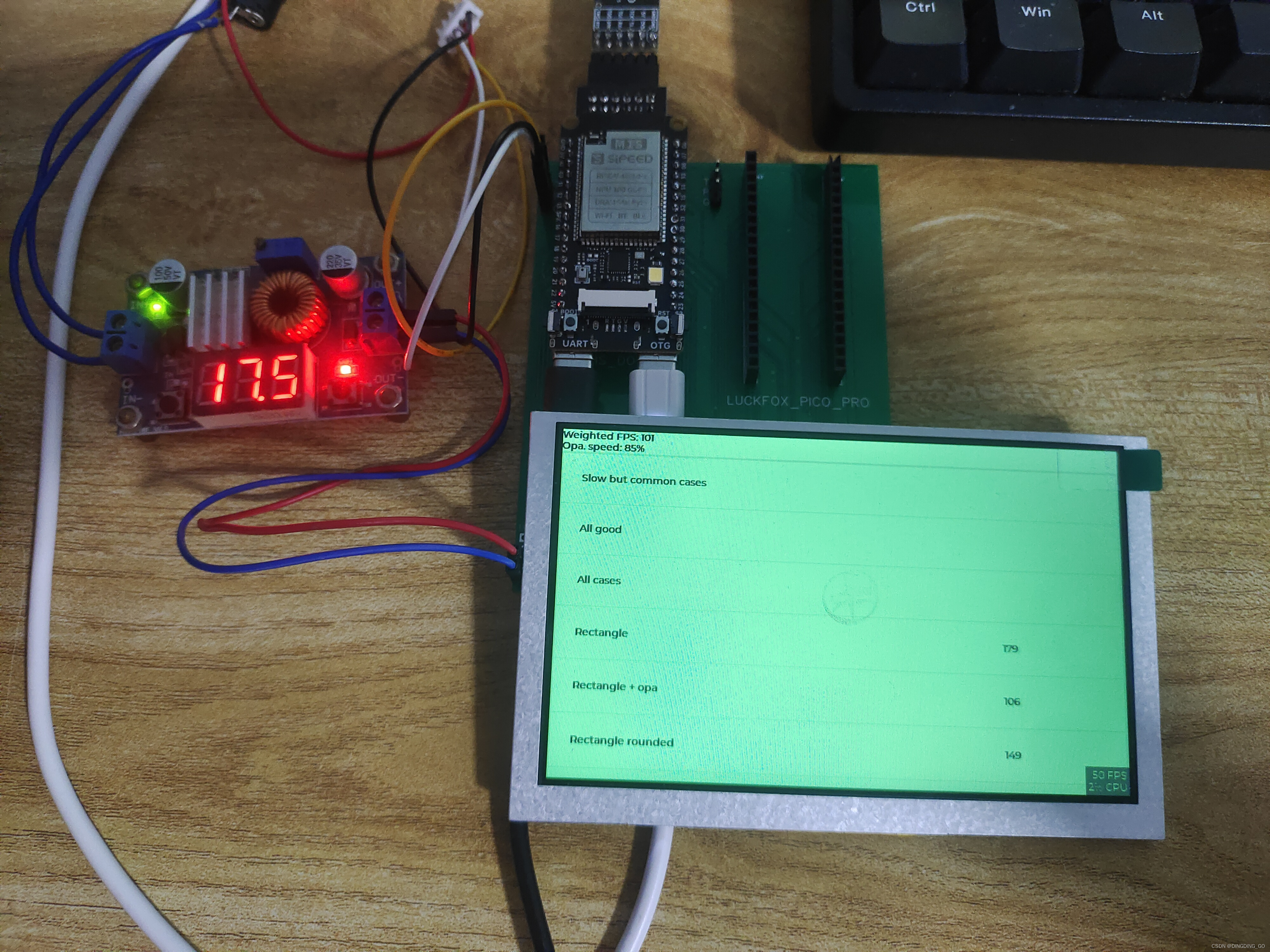
运行视频,点我走你!!!!!!!!
800-480-BL808-LVGL
上面的图片是自己打了一块PCB,屏幕显示发绿是因为在设计的时候并没有做到像上面介绍的将RGB565和屏幕的高位对其,而是低位对齐了,可以自己修改一下。背光使用的是16-18V可调电源,自己调节亮度。文件在此!!!!点我直达


